Modern Classicism: Margherita Sarfatti and the Novecento Italiano, between Brazil and the United States
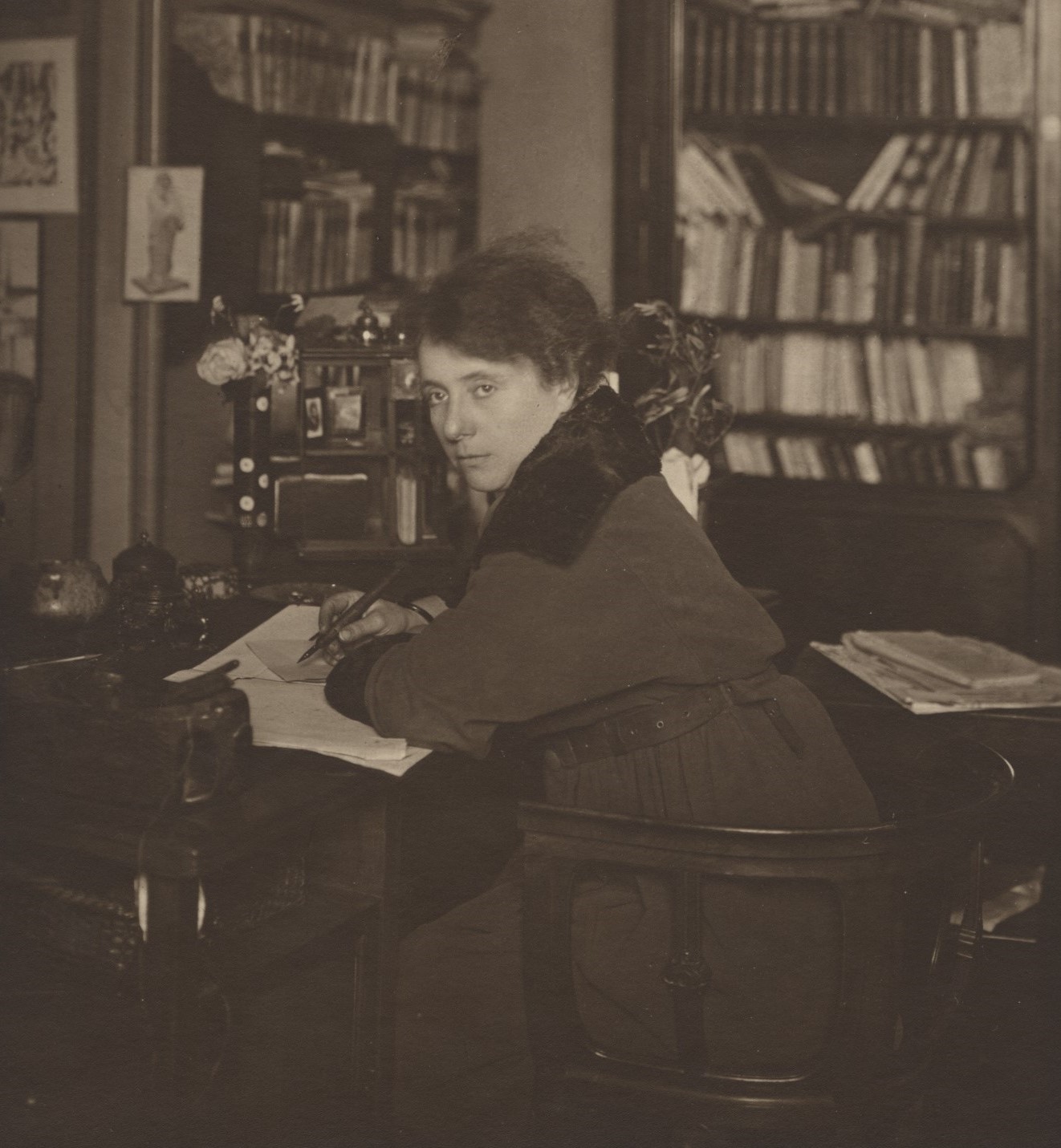
I.
The twenty-first century has seen the arts in Brazil recognized as a creative and significant part of the master narrative (so to speak) of art history. As the myriad of new studies in various Western languages and the many graduate programs in the United States and Europe have recently proven, interest in Brazilian art has risen to never-before-seen levels in the last two decades, deeply enriching our understanding.
However, this new landscape has not yet reassessed a critical dimension of the modernist experience in Brazil; that is, nationalism and national identity. Nationalism was a significant issue for Brazilian artists and critics throughout the first half of the twentieth century but it continues to be ignored within a historiography of modern Brazilian art that privileges theories of Anthropophagia [Anthropophagy] and post-coloniality associated with the works of Oswald de Andrade and Tarsila do Amaral. Even when nationalism does emerge in Brazilian art historiography, issues of exile and war are usually overlooked. It is high time that historians of Brazilian art discuss the migration of people, objects, and concepts that have been forced by circumstance into territories they did not plan or choose to be in. The concepts of nationalism and national identity have often been used to promote values beyond art itself and sometimes even adjusted to fit discourses that lend support to terrible political acts. Scholars often forget this when studying the history of modern art because art history textbooks, mostly produced from the 1950s on, hold a positive symbolic value for the civilized and democratic societies of the so-called Western world. However, this same history can also be tinged by relations to authoritarian political systems and figures, by developments that also played an essential role in shaping the modern experience of twentieth-century society and culture.
In the case of Brazil, these relations are even more critical to review, for its modern art experience is inescapably linked with the interwar period, debate and reassessment of Brazil’s colonial past, and the external forces of the Cold War that were competing, inch by inch, for domination of Brazilian territory. No one was more conscious of this fact than art critic Mário Pedrosa (1900–1981), who spoke of Brazil as being “condemned to the modern.”1 Pedrosa’s expression conveys the contradictions that built modernity in Brazil while leaving room to question the conditions through which it became a modernized country, and at what price.
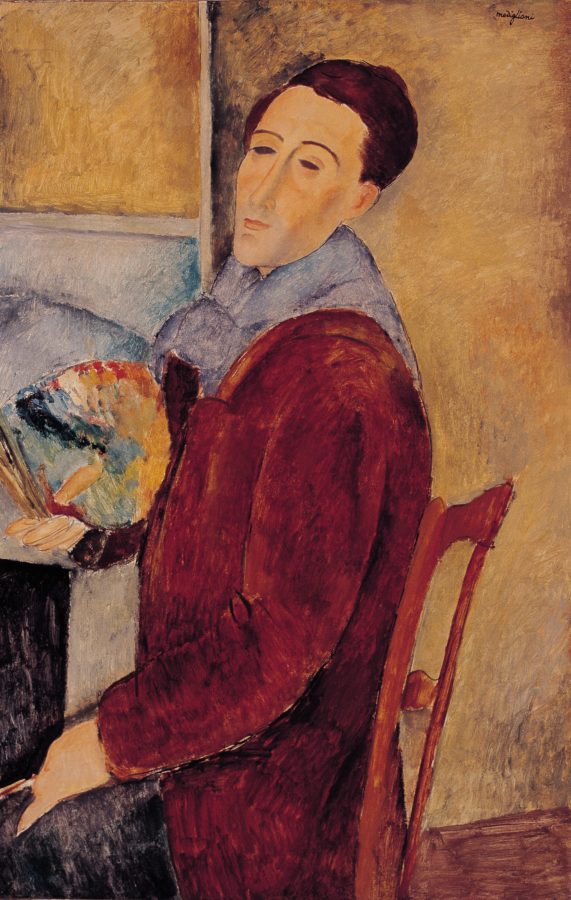
To explore these contradictions, this article considers a controversial figure whose writings and ideas were disseminated across South America: the Italian art critic Margherita Grassini Sarfatti (1880–1961). Her influence extended to helping conceive the collection of the first museum of modern art on the continent, the Museu de Arte Moderna de São Paulo (MAM).Her figure has emerged in research on the history of the first set of paintings bought in Italy for the MAM, in 1946 and 1947.2 (Fig. 1) These seventy-one paintings seem to have little connection to what is known about the history of the MAM and modern art in Brazil. Brazilian art historiography has largely put these works aside, dismissing their importance, as well as that of their authors, in the history of modern art and considering them to be bad artworks bought with no criteria other than the taste of the chairman and founder of the MAM, Francisco “Ciccillo” Matarazzo Sobrinho (1898–1976).3 (Fig. 2) Until recently, most have assumed that the paintings purchased for the MAM were bought to suit Matarazzo’s taste as a private collector and then left to the MAM in recognition of his role as a public figure.
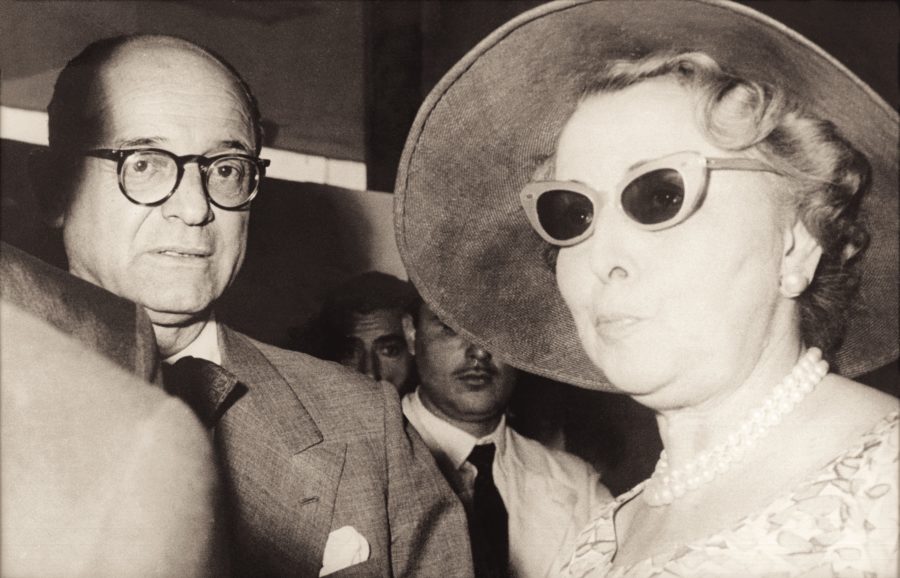
In reality, these works were collected in the specific context of the rehabilitation of modern Italian art in the international arena after the fall of the Fascist regime in Italy. A series of exhibitions on modern Italian art traveled to various South American capitals in 1946 and 1947. The term used to promote the works on view, Novecento Italiano, had been coined by Sarfatti more than two decades earlier. In contrast to the South American exhibitions, a separate major exhibition of modern Italian art, organized by the Museum of Modern Art (MoMA) in New York, avoided works under the banner of Novecento Italiano so as to give more emphasis to Italian avant-garde groups from the first decade of the twentieth century.
What was behind the term Novecento Italiano, and how did it relate to Sarfatti’s writings? And how did the Italian exhibitions that took place in South America compare to MoMA’s 1949 exhibition? This article shall address these issues by following Sarfatti’s steps and connections in the Americas.
Following the liberation of Paris and the end of World War II, the Brazilian press published numerous testimonies about the conflict. Brazil had entered the war late, in 1942, after a German submarine attacked a commercial ship in Brazilian waters close to Rio de Janeiro’s Guanabara Bay. Brazil’s news industry steadily grew in the early twentieth century through the creation of newspapers, magazines, and periodicals. The most powerful conglomeration of newspapers and magazines was the Diários Associados, owned by Assis Chateaubriand, who would create another major museum and collection in Brazil—the Museu de Arte de São Paulo (MASP)—with the help of a postwar Italian immigrant, the art critic and Milanese gallerist Pietro Maria Bardi (1900–1999).4 Like Sarfatti, Bardi was also an essential figure in the promotion of modern Italian art in Brazil in the aftermath of World War
II.
In early February 1945, one of Diários Associados’s star reporters, the Rio-based journalist Edmar Morel, was sent to Argentina and Uruguay to complete a series of articles about the extraordinary events then transpiring in those countries. In Argentina, he interviewed Sarfatti, who had been living as an exile in a luxury hotel apartment in Buenos Aires since 1939. (Fig. 3) Morel then published “Por que amei Mussolini” (Why I loved Mussolini) in A Cigarra. An introductory comment in the magazine notes, “As a special reporter of A Cigarra, sent to the republics of Argentina and Uruguay, Edmar Morel starts in this issue a series of features about what he saw in the two big South American countries. ‘Why I Loved Mussolini’ is the report of the troubled life of the fascist writer and poet Margarita [sic] Sarfatti, the woman who had a significant influence in Il Duce’s life.”5
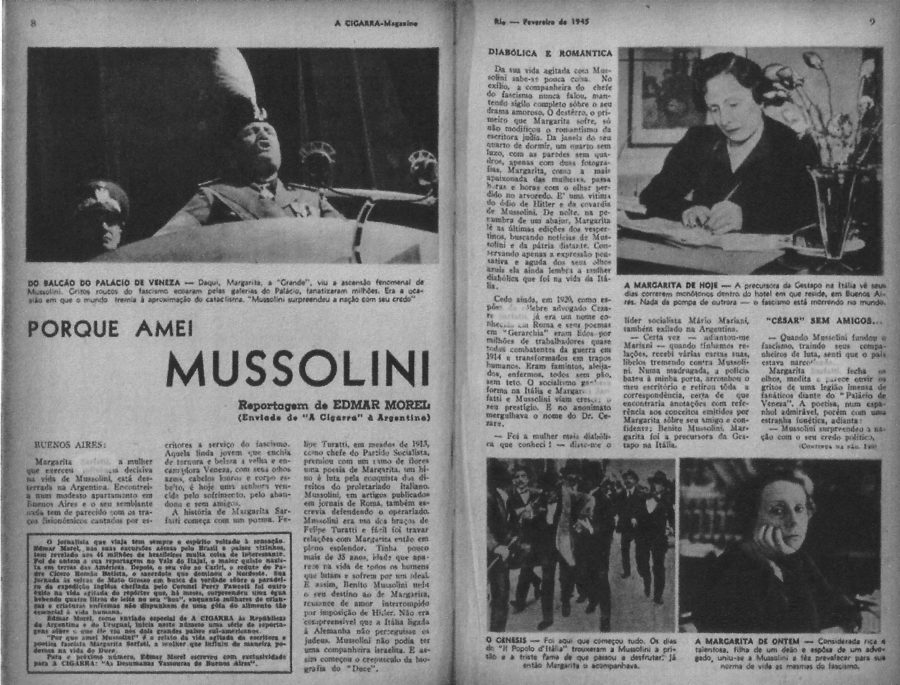
The feature includes two photographs of Sarfatti. One, on the upper right, shows her at her desk in the hotel room in Buenos Aires. The caption reads, “The Margarita [sic] of today—The precursor of the Gestapo in Italy sees her days pass by monotonously, inside the hotel where she resides in Buenos Aires. Nothing of the luxury of the past—fascism is dying in the world.” The second photograph, on the bottom right, shows her leaning on a desk. Her eyes suggest melancholy. Here, the caption reads, “The Margarita [sic] of the past—Considered rich and powerful, born into a wealthy family, and wife of a lawyer, she united with Mussolini and made of fascism her own rules of life.”
Morel reminds the reader of Sarfatti’s connections to South America, writing about her friendship with the Brazilian elite, her excursion to the region in 1930, her links to the Italian art group Novecento Italiano, and her role both as a Fascist ideologue and as an art critic and collector. Among her Brazilian friends was the writer, physician, and chairman of the Brazilian Academy of Literature, Aloysio de Castro, who had also been the chairman of the so-called Institute of High Italian-Brazilian Studies and the Society “Friends of Italy,” both founded in Rio de Janeiro in the early 1930s.6 De Castro was one of the prominent Brazilian intellectuals who welcomed a group of Fascist Italian intellectuals and politicians to Brazil in 1937, who toured other South American countries under the leadership of the Italian senator and Fascist ideologue Luigi Federzoni.7 The tour was followed by a series of rallies, public speeches, and active promotion of Italian art and industry at an exhibition celebrating fifty years of immigration in the state of São Paulo.8
Sarfatti’s correspondence with de Castro in this period is constant. De Castro encouraged her to join Federzoni’s tour.9 Although she ultimately declined the invitation, the two kept up their correspondence until her arrival in Brazil in 1939, following a trip to establish herself in Montevideo. (Fig. 4) In Brazilian press clippings of the time, she can be seen at de Castro’s side upon her arrival.10 Her association with de Castro is a prime illustration of her mingling of political and artistic activities, as well as her everlasting belief in the values of the artistic movement she had led in the 1920s and early 1930s in Italy, which she saw as vital for her ideas of what Fascist Italy should be.
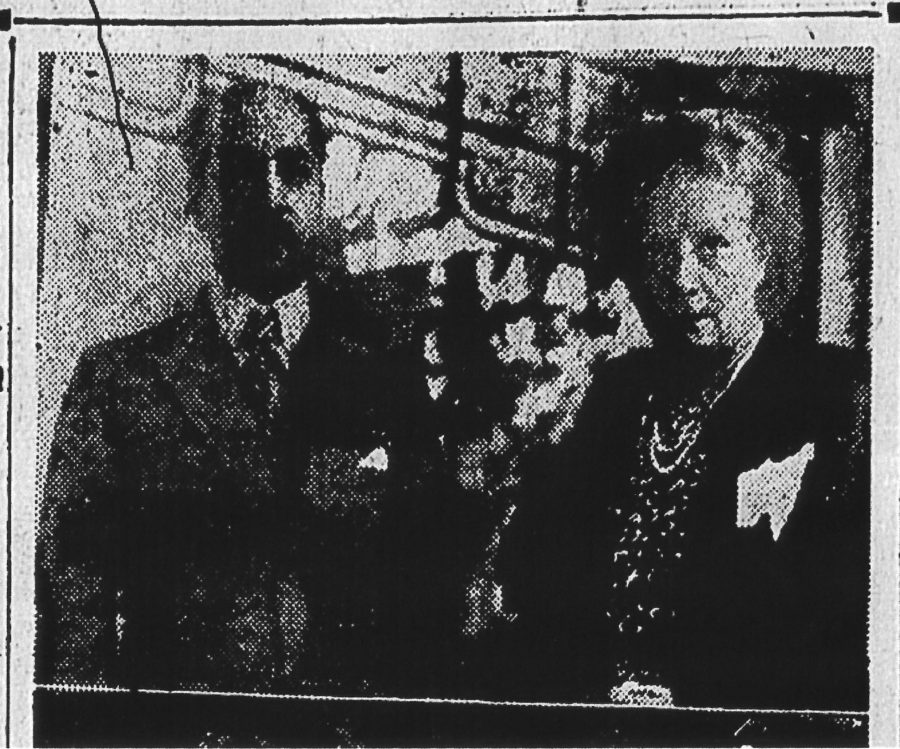
Sarfatti was born in Venice into a wealthy Jewish family in 1880.11 Her father became one of the most influential businessmen in the city, founding a vaporetto company in the late nineteenth century. She grew up in an extraordinary moment for the affirmation of the Jewish community in Venetian society, and she was the first generation in her family to live outside the Ghetto di Venezia. As a child and teenager, she lived in an elegant, traditional palazzo on the Grand Canal. Her parents decided that she should be educated at home. The last of her three private teachers, Antonio Fradeletto, was the mastermind behind Venice’s most important institution for the promotion of modern art: the Venice Biennale. From Fradeletto, Sarfatti developed an interest in the arts. From her mother, she developed a love of languages and literature, learning English, French, and German at an early age and later in life managing to speak and write in Spanish too.
In addition to the arts, Sarfatti showed a keen interest in the new political trends in her country, and at the age of sixteen she called herself a socialist and a feminist. Her early marriage to the Jewish lawyer Cesare Sarfatti allowed her to escape the protection of her family and participate in the circle of socialist intellectuals in Milan in the early 1900s. She then began to collaborate with the socialist newspaper Avanti!, which published her first texts as an art critic.
The Milanese atmosphere was perfect for a young intellectual interested in both politics and the arts. Sarfatti witnessed the rise of the Futurist movement, which she at first supported, becoming a close friend of Umberto Boccioni, among others. Milan was also where she met Mussolini, becoming his mistress, breaking with the socialist intellectuals (as did he), and then marching side by side with him, witness to the rise of the Fascist regime in her country.
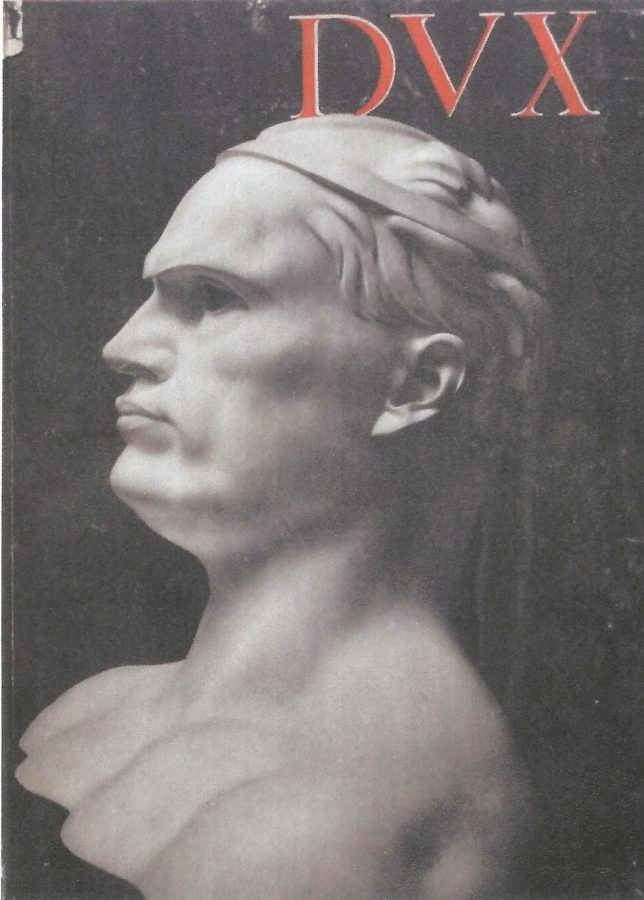
After the 1922 March on Rome that marked Mussolini’s rise to prime minister of the Italian parliament, Sarfatti dedicated herself to a significant enterprise linking art, feminism, and politics. Her first step was taken at the invitation of a British publisher to prepare a biography on Mussolini. The Life of Benito Mussolini was launched in English in 1925 and had its first translation into Italian the following year.12 (Fig. 5) The cover of Dux, as the Italian version was titled, featured the bust of the dictator that Italian symbolist sculptor Adolfo Wildt had exhibited during the first anniversary of the Roman March in 1923. Wildt was one of the artists Sarfatti appreciated throughout this period, commissioning him to create her own bust in marble in 1929. Even if Wildt did not take part in the group of painters Sarfatti fostered from 1923 onward, his references to ancient Roman sculpture and his studies of classical tradition aligned with what she then advocated as the Novecento.
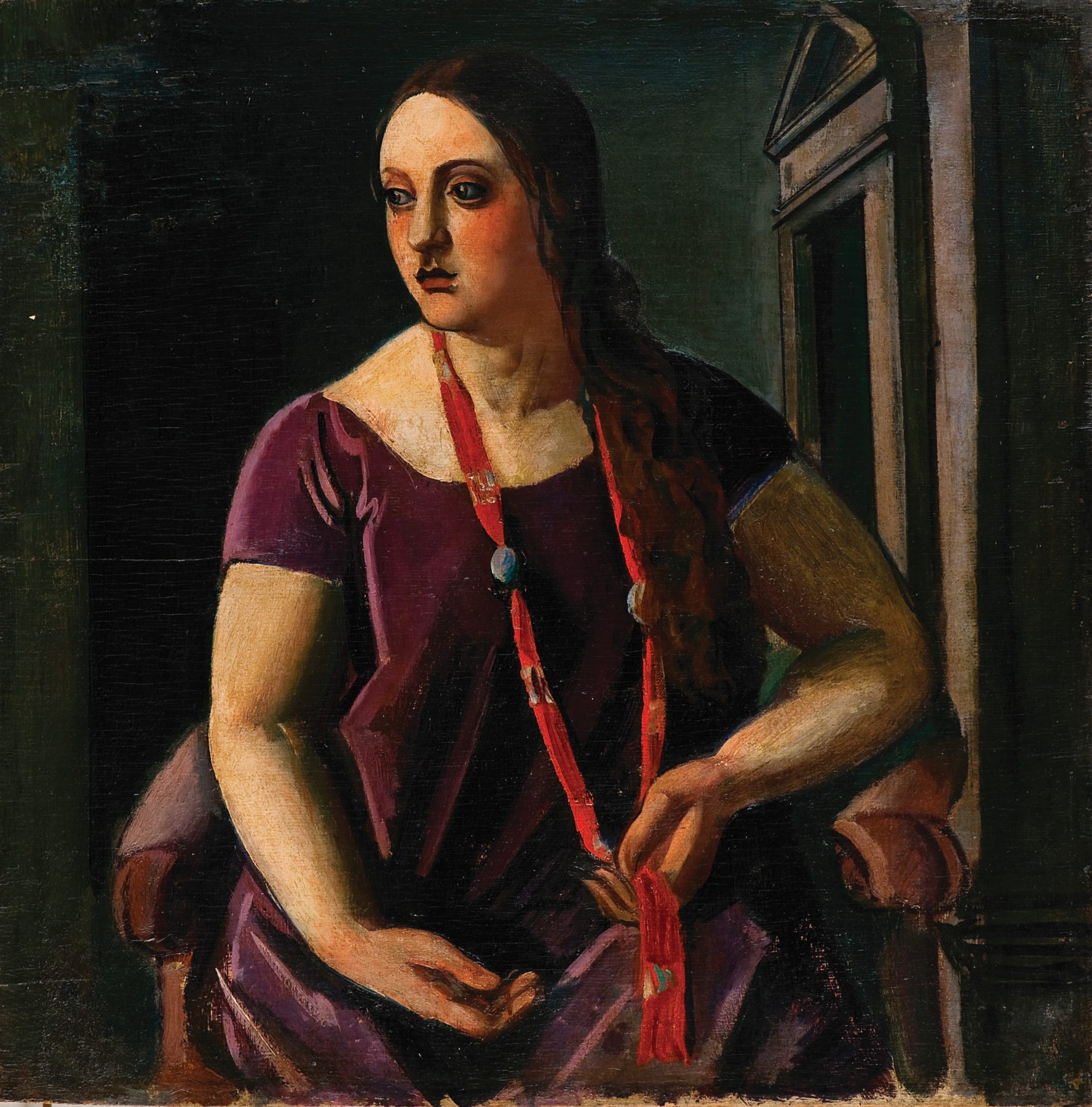
Sarfatti coined the term Novecento to designate a group of six artists who had returned to the fundamental values of the classical tradition while reinterpreting the works of Renaissance masters, mainly of the Quattrocento. These were artists Achille Funi (1890–1972), Mario Sironi (1885–1961), Leonardo Dudreville (1885–1976), Piero Marussig (1879–1937), Emilio Malerba (1880–1926), and Anselmo Bucci (1887–1955), who had presented a group exhibition at Galleria Pesaro, in Milan, in 1923. Two of the artists identified as Novecento—the painters Funi and Sironi—also collaborated with Sarfatti in organizing the group’s initiatives. Both painters abandoned Futurist experimentation to become leading influencers of the Fascist regime’s image in the 1930s. Funi had reinvented his pictorial language by turning to the Quattrocento artists of the Ferrarese cycle, especially Cosmè Tura. (Fig. 6) The set of works purchased for the São Paulo MAM holds a painting by him from this period of so-called magical realism; it helped to build an interpretation of the seventy-one paintings bought for the museum under the concept of Novecento Italiano.13 Sironi in the 1930s was the regime’s de facto official painter and the coordinator of its important mural commissions for public buildings. (Fig. 7) Although the works purchased for the MAM collection includes six paintings by Sironi with explicit references to Italian classical tradition, none are connected to his Novecento paintings.14
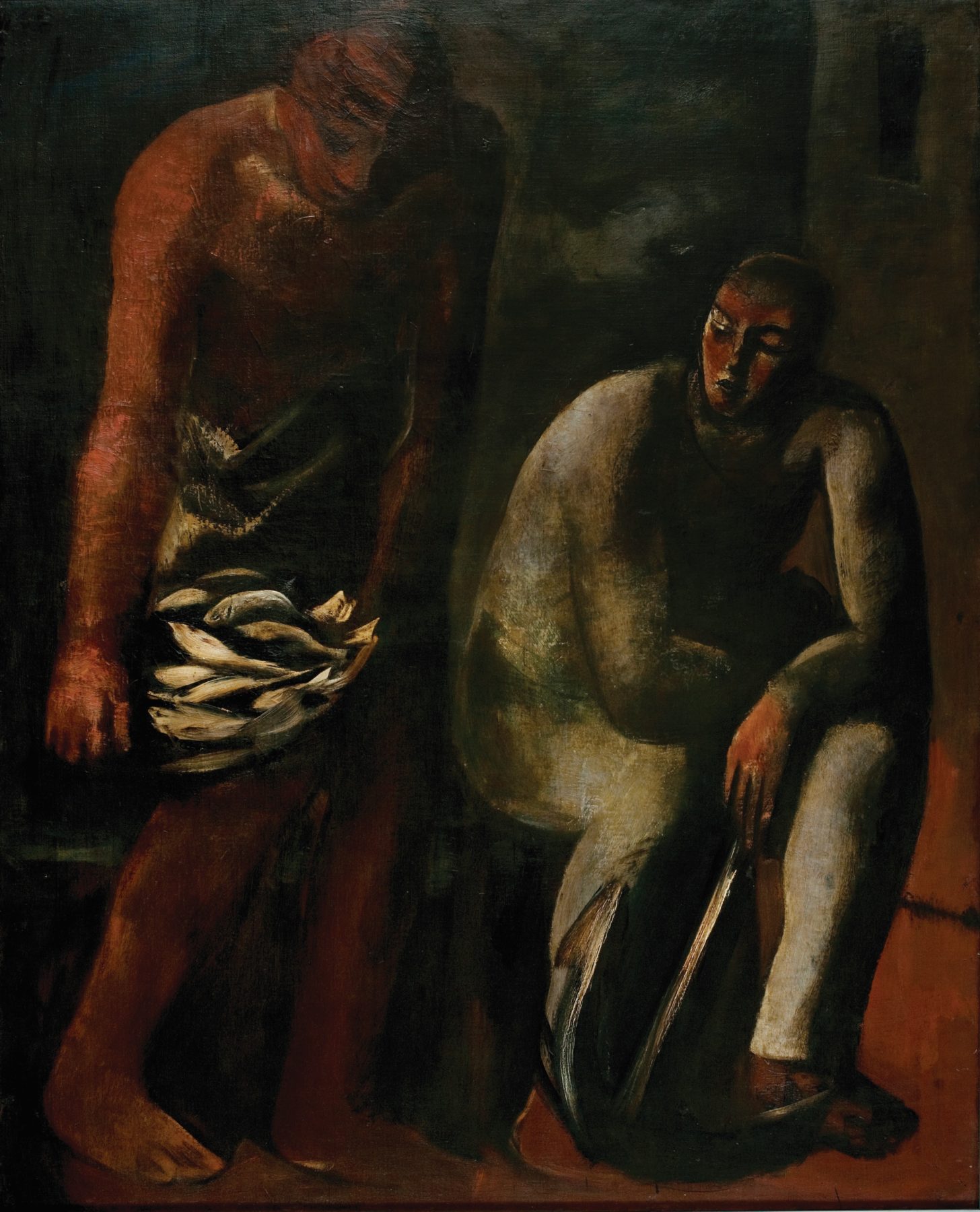
This initial group of painters was quickly reconfigured.15 In the first exhibition of the group under Sarfatti’s curatorship in Milan, in 1926, the term Novecento was expanded to incorporate the national origin of the artists. From then on it consisted of approximately one hundred artists of different artistic backgrounds, who nevertheless, in Sarfatti’s vision, shared a common figurative language and were all indebted to the classical tradition in the arts.16 The connection of this new style to Fascist politics marked the second major step in the group’s advancement. Sarfatti invited Mussolini to give the inaugural speech at the 1926 Milan exhibition. Written by her, the address explicitly talked about an official art for the regime. Promoting the idea of a New Italy, of a modernity rooted in Italian classical tradition, the speech was Sarfatti’s attempt to transform the Novecento Italiano into the expression of Italian society under Fascism.17
Her intense campaign to promote the Novecento Italiano unfolded in a series of exhibitions abroad. In 1930, the shows reached South America. Arriving for her first visit to the continent as a representative of the Fascist regime, she organized an exhibition of the Novecento Italiano that toured Buenos Aires, Rosario, and Montevideo.18
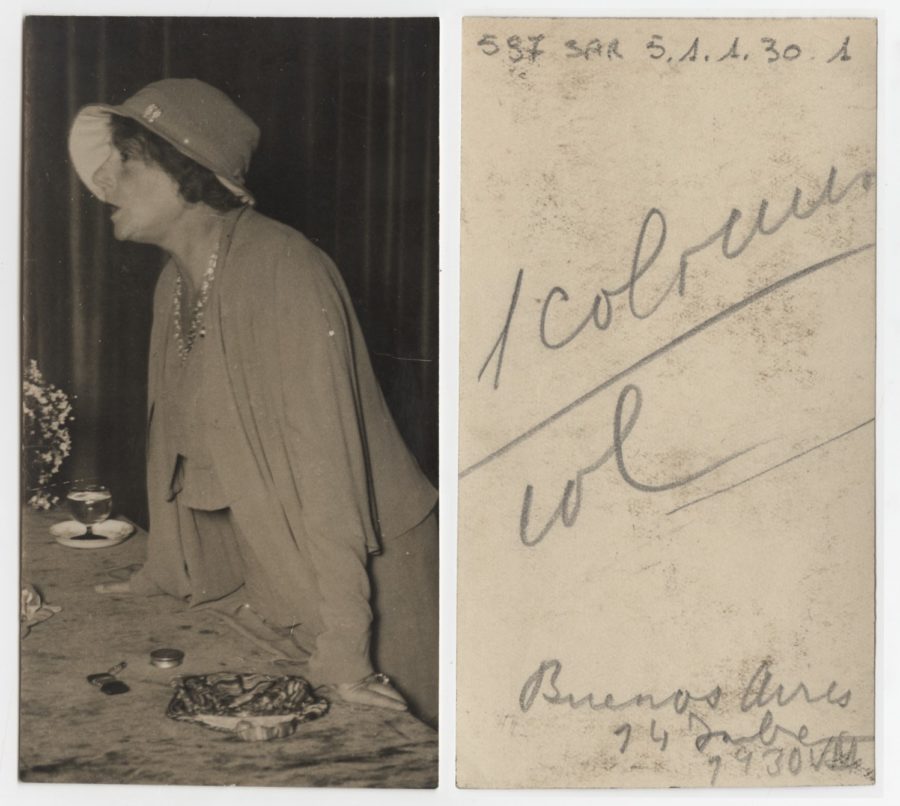
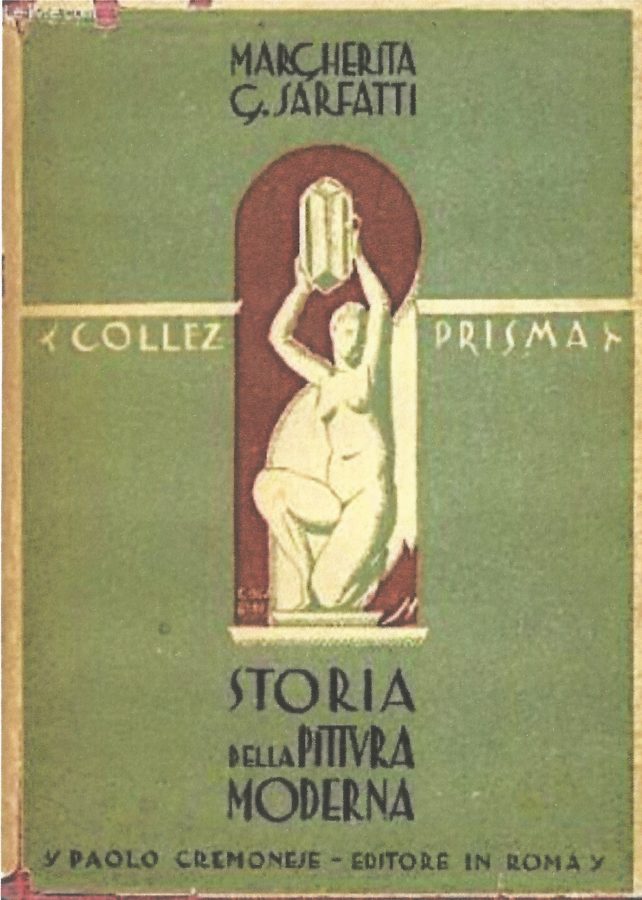
During this short visit to South America, Sarfatti lectured on modern painting in Buenos Aires and Rosario and promoted her newly published book, Storia della pittura moderna (History of Modern Painting), in which she sought to interpret modern painting using a paradigm opposing synthesis and analysis.19 (Figs. 8 & 9) Within this schema, Italian art, embedded in the classical tradition and informed by the high art of the Renaissance, corresponded to the forces of an art of synthesis. The art of analysis, in contrast, was typical of Northern European traditions, inclined to abstraction and emerging in periods of crisis. As Sarfatti understood it, art evolved cyclically, with periods of crisis overcome by the art of synthesis, which corresponded to the peaks of high art in Western history.20 The book became a major hit in the region, and extensive excerpts were reproduced in Brazilian newspapers.21
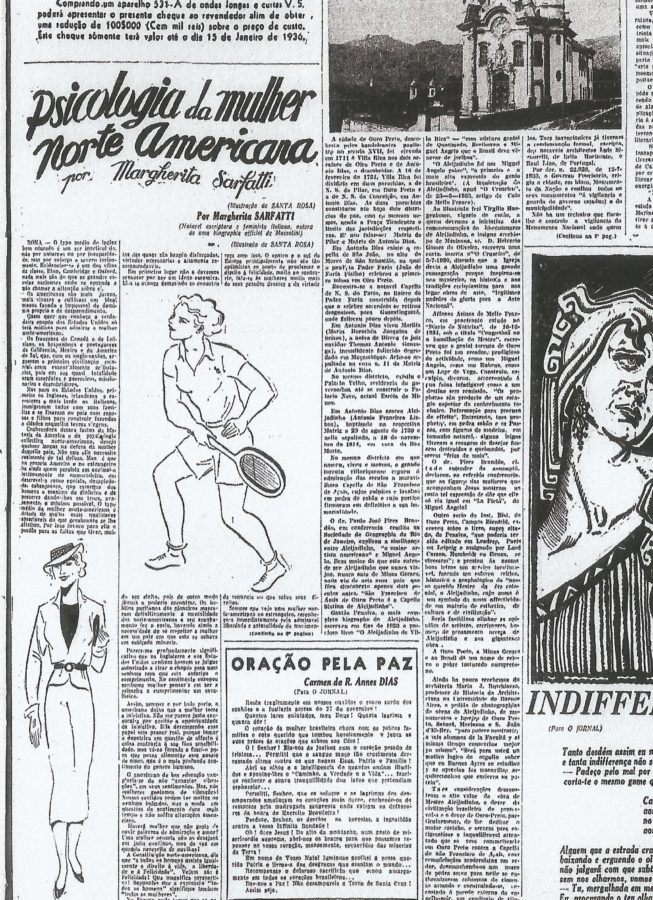
From then on, Sarfatti was a celebrated figure in the Brazilian media, where one could read about her trips, how she dressed, the books she launched, and the awards she received. This was the case, for instance, in 1937, when she was granted the so-called Galante Prize, a prestigious Italian literature award at the time, for her book L’America ricerca della felicità (America: The search for happiness).22 In this book, written after her first and only visit to the country in 1934, she praises the modern qualities of the United States as a society and a nation. During her visit she had been invited by the Society of the Women Feminist League to give lectures on the modern woman, one of which was even broadcast on the radio. Brazilians had followed her moves in the United States with interest. The Rio de Janeiro newspaper O Jornal published an article on women in the United States by Sarfatti in December 1935.23 (Fig. 10) Titled “A psicologia da mulher norte-americana” (Psychology of the North American woman), it describes new aspects of the behavior of United States women, in whom Sarfatti saw more freedom of movement and spirit. This, however, might lead them to be misunderstood by men, who could read in such attitudes an inappropriate liberalness in their approach to the opposite sex. The article appeared with two illustrations by Brazilian artist and set designer Tomás Santa Rosa.24 Both the illustrations and Sarfatti’s argument are indebted to Umberto Notari’s book La donna tipo tre (Type-three woman), published in Milan in 1929.25 (Fig. 11) Notari was a good friend of Sarfatti’s and had been inspired by her life and deeds to speak theoretically of the “type-three” woman: that is, the woman who was financially independent, autonomous in her life choices, and helping to build Italy as a modern country.
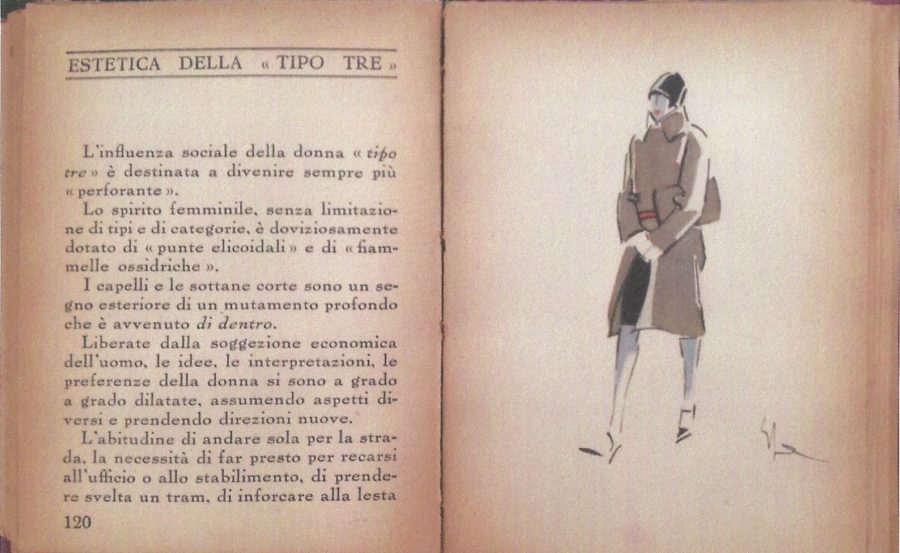
Sarfatti’s visit to the United States lasted approximately six months and also resulted in excursions in the art world. The May 1934 edition of MoMA’s bulletin, in the “Distinguished Visitors” section, reads, “Signora Margherita Sarfatti is well known as a biographer of Mussolini and as collaborator with Mussolini upon the newspaper Il Popolo d’Italia. At least of equal importance is her role as advocate of the advance-guard in modern painting and architecture. She has been the champion of Il Novecento—‘20th century’—a group of artists and writers in Milan… Among her books is the Storia della pittura moderna, the best short book on modern painting in the Italian language.”26 The note appears at the same moment MoMA was announcing its latest acquisitions, which included several works by Italian artists associated with the Novecento.
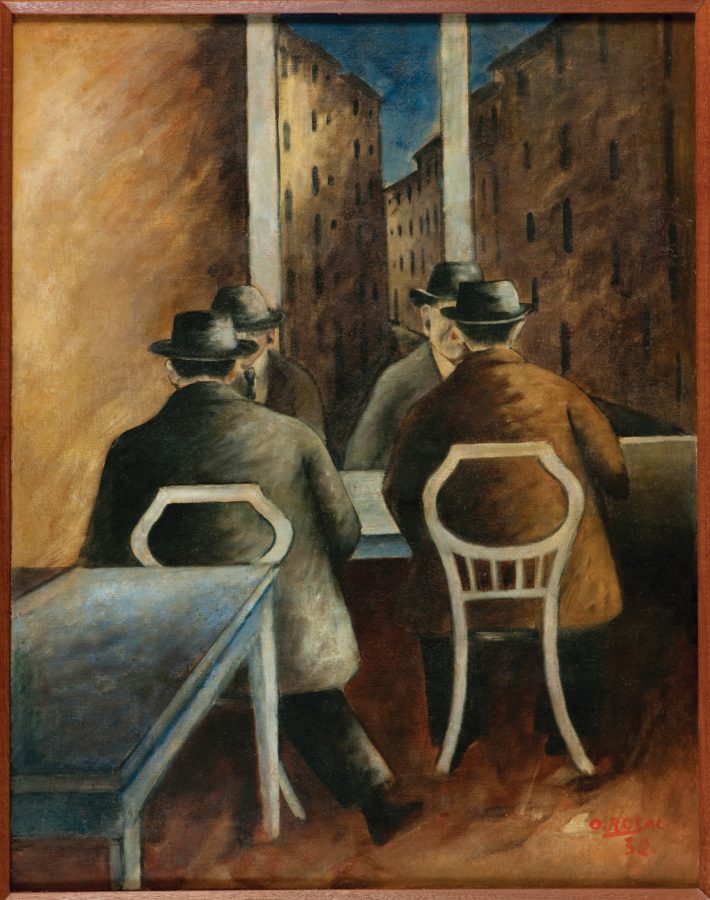
Researchers in Italy and the Americas who have studied Sarfatti’s life as a Fascist ideologue might have been led to disregard two crucial details about her work as an art critic and promoter. First, many believe she had already fallen into disgrace among the Fascist elite by the early 1930s and that the promulgation of Italy’s racial laws in 1938 were what led her to flee the country for exile in South America in 1939.27 Second, her accomplishments after settling in Buenos Aires have largely been taken for granted, overlooked as mere spicy anecdotes about her personal life. In reality, Sarfatti was a productive art critic after settling in South America. Her ideas on modern art circulated and were used to promote modern Italian art, especially the Novecento Italiano, both in Italy and in South America.
In the 1930s in Italy, the label Novecento Italiano was used to promote modern Italian art in general, while highlighting its Latinity and Mediterranean traits. This strategy was also important for affirming Italy’s national identity, both by refusing the “foreign traits” of the Paris School and reassuring Italians of Italy’s cultural supremacy in the international context. Once Mussolini made his alliance with Adolf Hitler’s Germany, the promotion of exhibitions of modern Italian art in European capitals became an internal project. As minister of national education (from 1939 on), Giuseppe Bottai (himself a collector of modern Italian art) established a policy to foster private Italian collections of modern Italian art. The project reached its peak in 1941 and 1942 when a series of exhibitions were held at the Galleria d’Arte di Roma (the gallery of the national trade union for artists) to present the private collections that had already been formed thanks to the policy. The most illustrious of these was the collection of the Venetian editor and soon-to-be gallerist Carlo Cardazzo, from whom Matarazzo acquired seven paintings for the São Paulo MAM six years later.28 (Figs. 12 & 13)
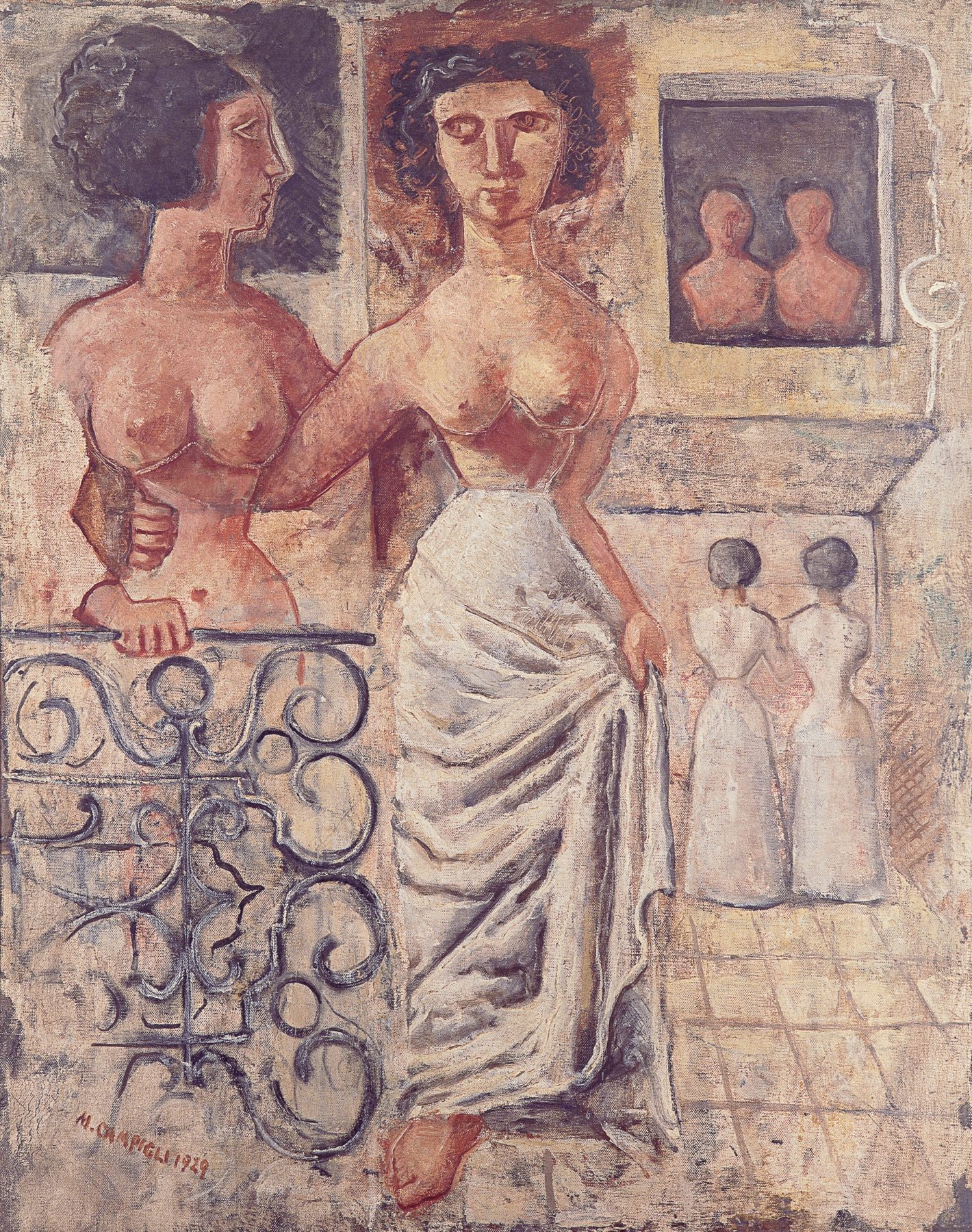
In discussions of these private collections, the notion of Novecento Italiano continued to be employed, though it was largely synonymous with “twentieth-century Italian art.” However, the term seemed to guarantee the common roots of Italian artists as descendants of a Latin/Mediterranean culture or, as the Fascists would say, of italianità (Italianness).29 Italian art history, in this view, is understood as being a single, continuous current that developed from classical antiquity into the modern era. Sarfatti herself had constructed this argument as early as 1927 when she published her essay “L’arte e il fascismo” (Art and Fascism): “To us Italians, art is the second name of the motherland.”30 The same concept was then adopted by the Italian modern art exhibitions organized by agents of the Fascist government in the first half of the 1930s. The linkage of Italian modern art to its classical tradition (i.e., Renaissance art) was reinforced by the touring of double exhibitions; for example, an exhibition of Italian Renaissance masters paired with a show of Italian modern artists.31
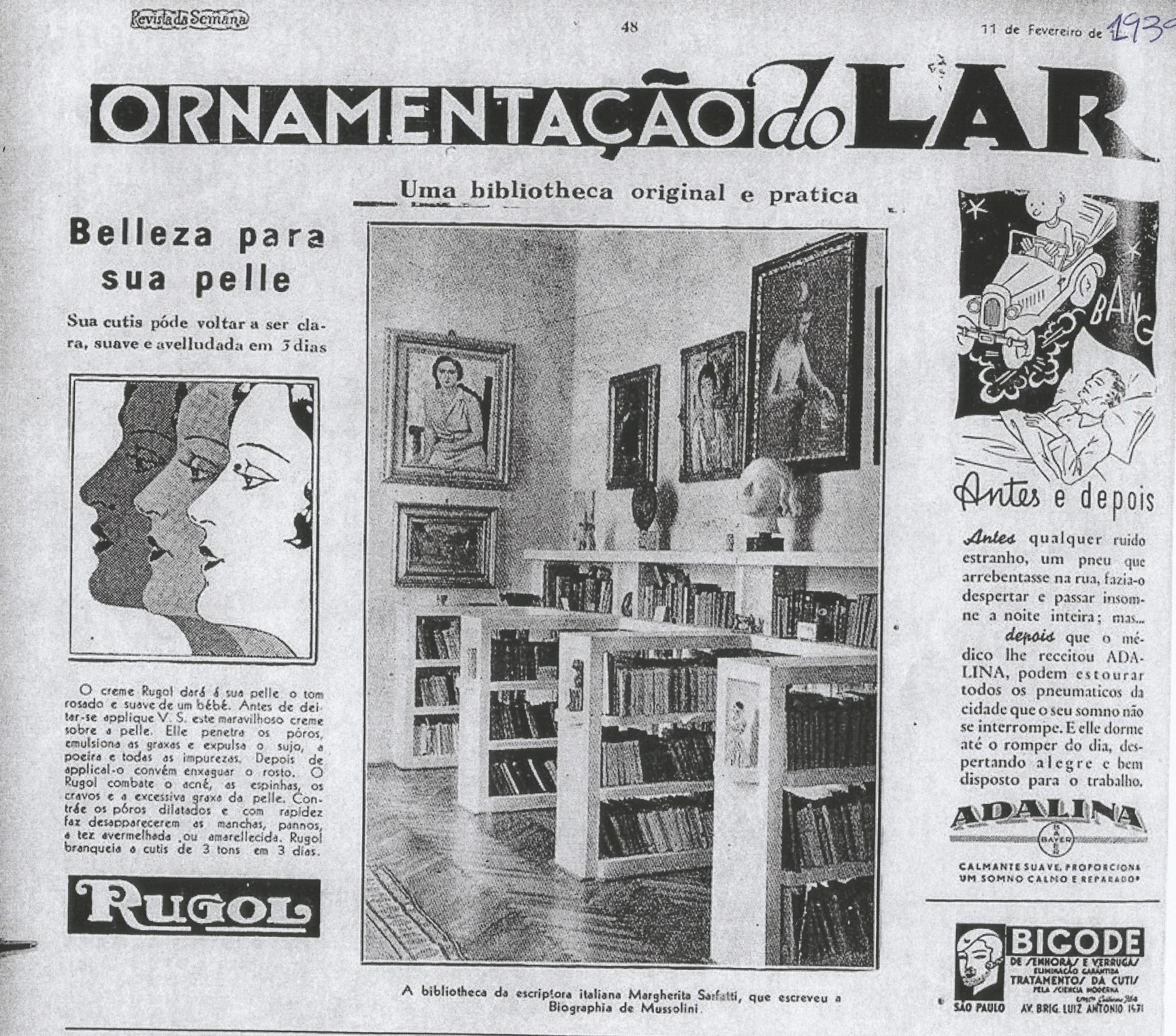
In any case, Sarfatti did not arrive as a fugitive in South America. (Fig. 14) Months before her arrival in 1939, a curious photograph of her library in Rome was published in the women’s section of the Revista da Semana. The caption reads, “Ornamentação do lar. Uma biblioteca original e prática” (Ornamentation of the home. An original and practical library).32 She is again remembered as Mussolini’s biographer, and the photograph includes the bust Wildt had made of her (it can be seen on the main shelf). The photograph was published at a crucial moment in the promotion of modern art, both in Italy and Brazil. In Italy, the support for private collecting of modern Italian art paralleled the rise of special editions and publications on Italian artists of the time, and the idea of a specialized library was directly associated with the modern art world in Italy. Many Milanese gallerists (the center of the art market in the country) would become publishers and have a bookstore display alongside their exhibition venues.33
In São Paulo at this time, officials were debating the renovation and revision of the city’s municipal library, which was reinaugurated in a new, modern building in 1942. There the art critic Sérgio Milliet (1898–1966), following in the steps of the seminal modern art critic Mário de Andrade (1893–1945), created the modern art section, which was where the committee that conceived the MAM would gather in 1945.34 Milliet and Andrade both supported a group of São Paulo painters whom they considered to be engaged in a type of modern painting with social and collective values, as exemplified in the works gathered and promoted by painter Paulo Rossi Osir (1890–1959) in the second half of the 1930s. These “worker painters,” as Andrade would call them, exhibited their works from 1937 to 1939 and came to be known as the “Santa Helena Group.”35 The group had begun gathering in an old building in downtown São Paulo, renting smaller rooms for studio space starting in 1934. Rossi Osir saw in them values similar to those of the Novecento Italiano artists. Rossi Osir would foster the presentation of the Santa Helena artists as a group of São Paulo painters dedicated to depicting the landscape of the city and its outskirts, as well as the everyday life of the worker’s neighborhoods. The connection of such artists with the São Paulo landscape and the idea that they were expressing local identity led Andrade to call them the “família artística paulista” (São Paulo artistic family) and view them as an important new current of modern painting in Brazil.36 These São Paulo artists must have found in their Italian counterparts an affirmation of the values they were seeking for their own practice. Moreover, they received the support of the industrial immigrant elite in São Paulo, who might have understood their work as an affirmation of Brazilian identity (as conceived by the state of São Paulo).37 The Fascist Italian strategy of fostering national identity through landscape and genre painting thus also proved useful for the São Paulo elite.
Rossi Osir was also one of Sarfatti’s strongest promoters in Brazil. He had been educated as an architect and artist at the Politecnico in Milan from 1911 to 1914.38 Born to a family of Italian immigrants, he was well versed in the culture of his ancestors and took part in exhibition initiatives from an early age. Upon his arrival in São Paulo in 1919, he brought with him an exhibition of nineteenth-century Italian painting meant for local sale to private collectors. By 1927, he was back in Milan, where he made some paintings in the mode of Novecento Italiano painter Arturo Tosi (see, e.g., his Ponte Velha, in the collection of the Museu de Arte Contemporânea da Universidade de São Paulo [MAC USP]). (Figs. 15 & 16) Moreover, his private library included not only an original edition of Sarfatti’s Storia della pittura moderna but a wide variety of publications and monographs by modern Italian artists, especially those of the Milanese circle.39
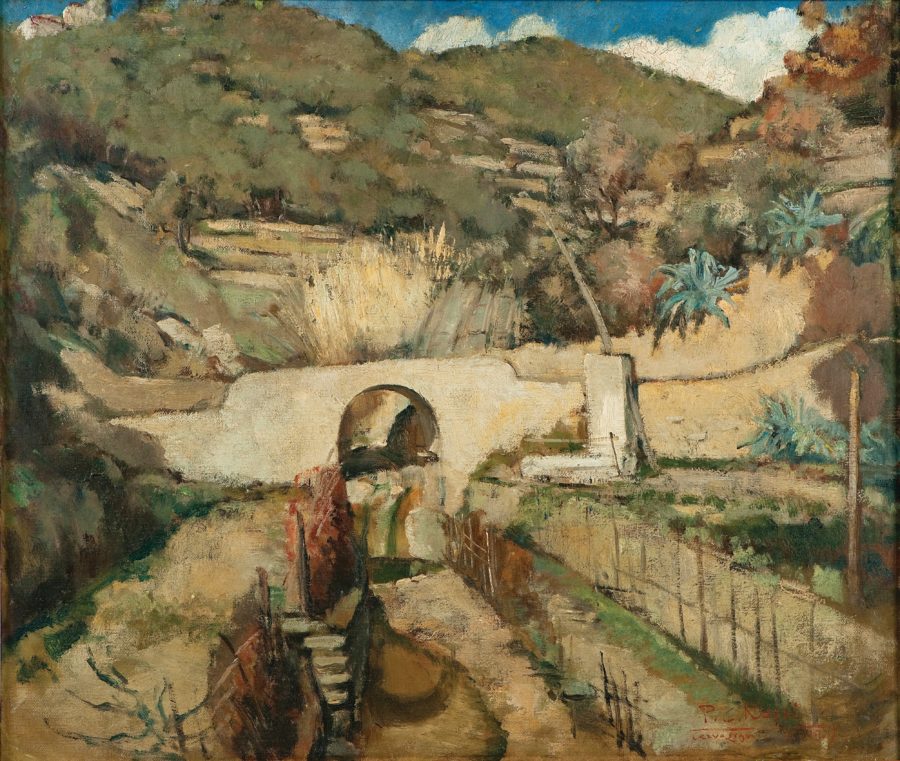
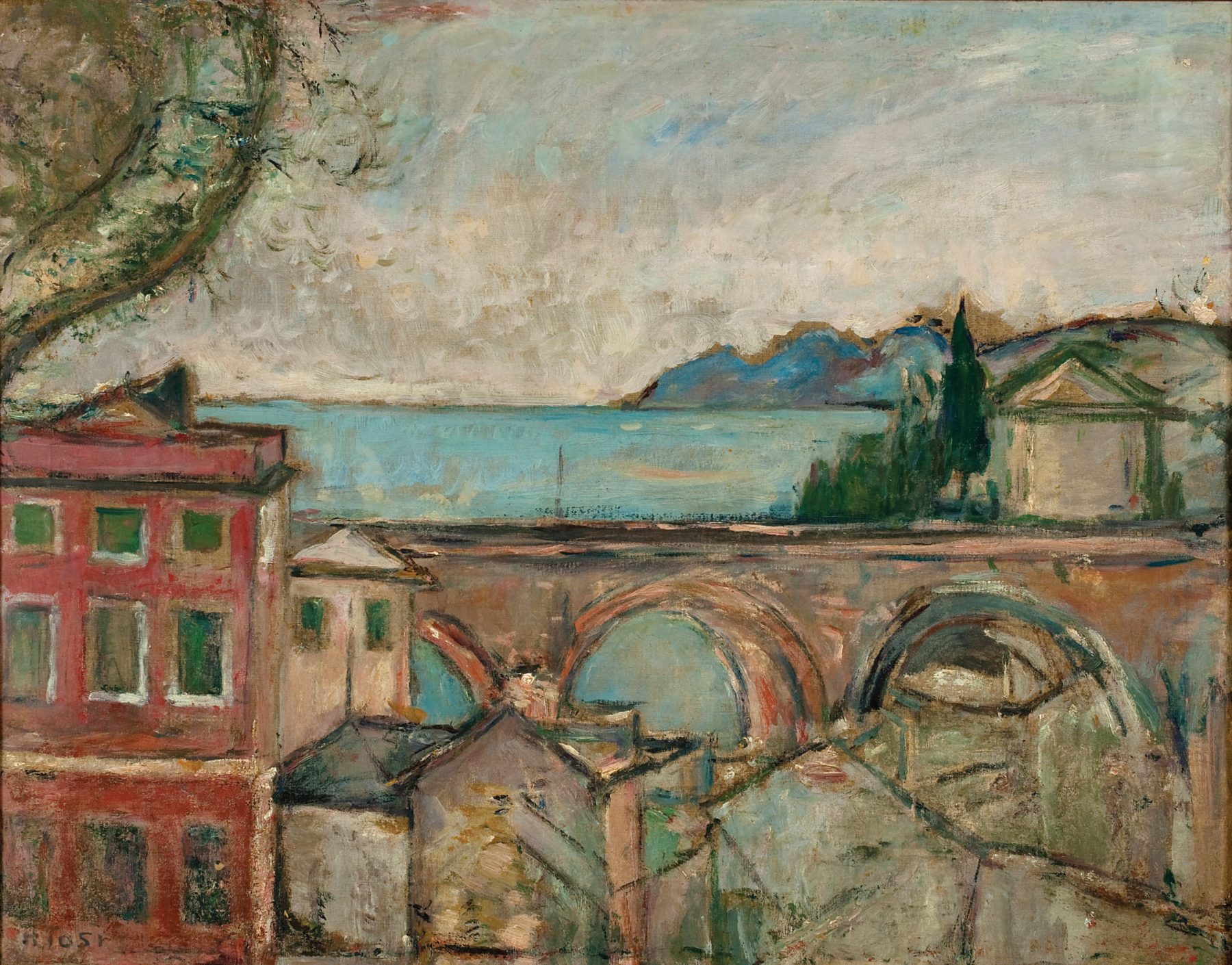
Explicit connections can also be found between Sarfatti’s new book on modern painting, Espejo de la pintura actual (Mirror of modern painting, 1947), which was published in Buenos Aires at the same time she was helping Matarazzo buy paintings in Italy for the MAM, and writings of the period by Milliet and the Argentine art critic Jorge Romero Brest (1905–1989).40 The latter was not only the editor of Sarfatti’s book, but the author of the first monograph on Brazilian modern painting to appear in Argentina.41 While preparing the latter, Romero Brest was in intense communication with Milliet, relying on the Brazilian critic to be his interlocuter, so to speak.42 In São Paulo, Milliet was working on a book that first appeared in 1942 and in 1949 would be the theme of his first lecture as a member of the Brazilian section of the International Association of Art Critics in Paris. If, on the one hand, his Marginalidade da pintura moderna (Marginality of modern painting) borrows the concept of marginality from the field of United States economic theory of the 1930s (primarily through a reading of Chicago School intellectuals), on the other hand, he seems completely familiar with Sarfatti’s vision of an evolution in cycles of the history of Western art, alternating analysis and synthesis, the latter of which for him also corresponded to a revival of the principles of the classical tradition.43 For his column in the newspaper O Estado de S. Paulo, Milliet reviewed Sarfatti’s Espejo de la pintura actual, which she herself explicitly understood as an updated version of her Storia della pittura moderna from 1930.44 In 1947, Sarfatti also added some chapters to the original book, including one dedicated to Brazilian painting and an appendix on the modern painters of the River Plate region. In the case of the chapter on Brazil, her emphasis was on the São Paulo painters of the Santa Helena Group. In essence, the book was written to “explain” the collection being purchased for the MAM: the Italian acquisitions would add to acquisitions made by Matarazzo from these Brazilian painters.
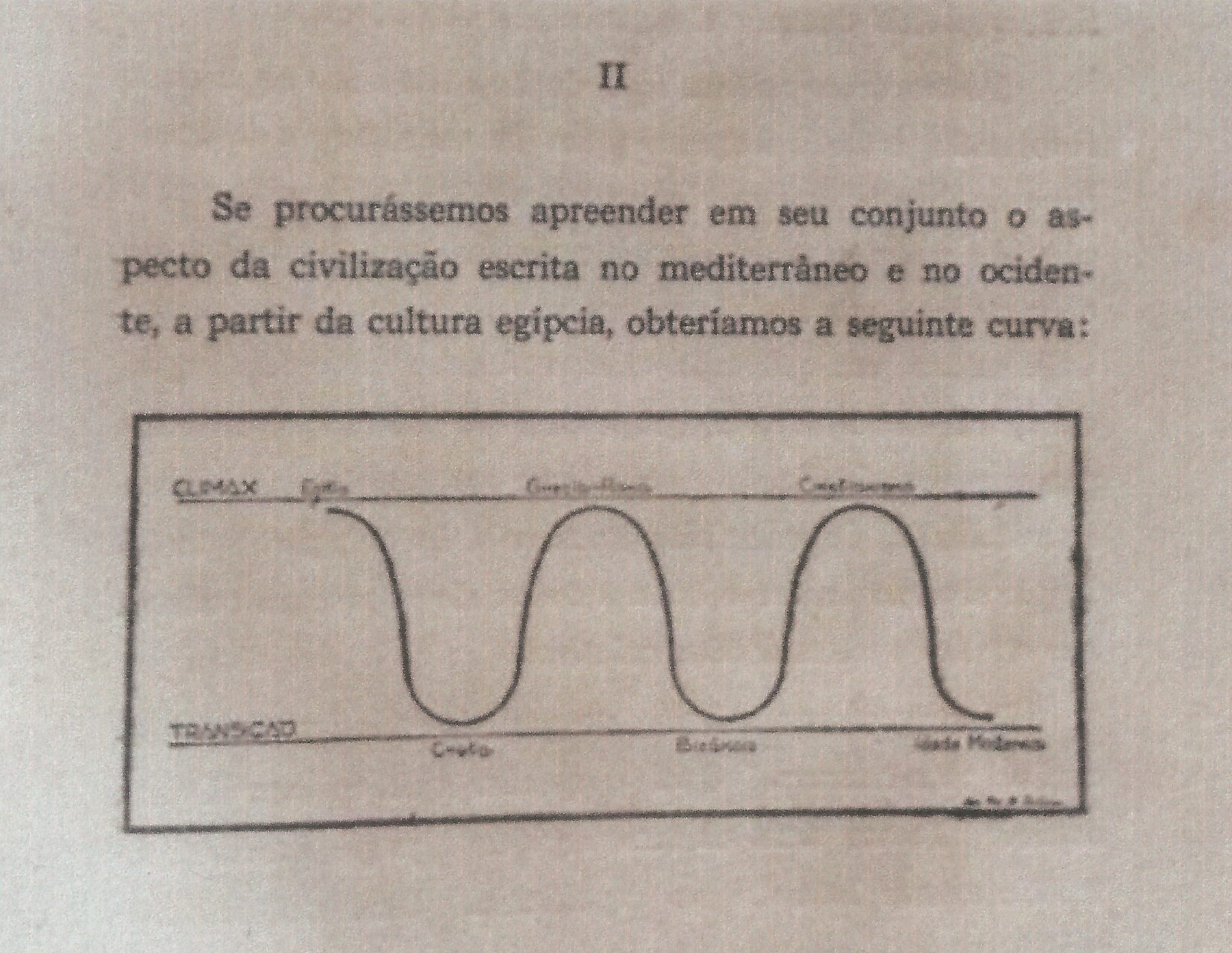
The making of the MAM’s collection also points to the continuation in the postwar period of Italian diplomatic strategies to renew and reinvent cultural institutions abroad. The notion of the Novecento Italiano as synonymous with modern Italian painting was still being used in the immediate postwar years for the promotion of modern Italian art in South America. (Fig. 18) Since the early 1940s, avant-garde practices and the Parisian artistic milieu had been connected to the emergence of new currents—such as the Gruppo Corrente di Vita Giovanile—that were first presented in South America through the lens of the Novecento Italiano. A testament to the postwar dominance of the Novecento Italiano can be found in a series of exhibitions of modern Italian art that toured the main capitals of South America at the same moment as the collection of the São Paulo MAM was being formed in 1946–1947. The first of these took place in Santiago de Chile and Buenos Aires and actually tried to propose a renewed vision of modern Italian art, distancing itself from Sarfatti’s privileged group.45 Nevertheless, when Romero Brest reviewed the exhibition at the Galería Peuser in Buenos Aires, he critiqued the absence of the Novecento Italiano artists in the show’s curation.46
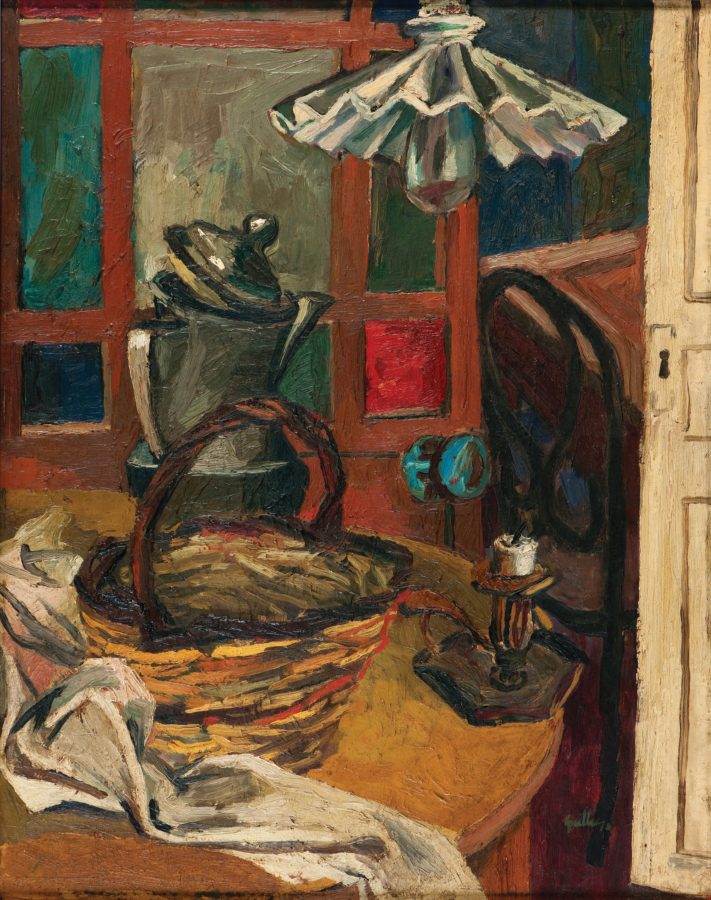
In 1947, two other exhibitions of modern Italian art in South America emphasized the Novecento Italiano. Another major Milanese gallerist and promoter of Sarfatti’s Novecento Italiano, Vittorio Barbaroux, presented a selection from his private collection at the Galería Müller in Buenos Aires.47 In Rio de Janeiro, Bardi organized a show of modern Italian painting at the Ministry of Education and Health and then remained in Brazil to help found the MASP.
Bardi explicitly sought a dialogue between the paintings on view and the acquisitions being made for the São Paulo MAM, while also giving more emphasis to modern Italian painting embedded in the classical tradition. In his text for the small exhibition catalogue, he used the term contemporary neoclassicism to designate the paintings on display.48 In his review of Bardi’s show, Pedrosa wrote about the classicizing trends of modern Italian art: “Fascism was a Chinese Great Wall not only around the best artists but also around everything that bore the hallmarks of authentic Italian genius during this long interregnum in which a clown ruled the country like a megalomaniac. Now, luckily, direct contact has been reestablished between the old Latin she-wolf and us, Latin American bugres who speak Latin.”49
Pedrosa saw Latin America, particularly Brazil, as directly linked to Latin culture and tradition: bugre was a traditional, derogatory term among Portuguese colonizers, used since the early colonial period to refer to indigenous peoples. They used the word to distinguish those individuals who had not yet converted to Christianity. Later, the word came to have other negative meanings, such as “uncivilized,” “heretical,” “violent,” “primitive,” “illiterate,” and “stupid.”50 Pedrosa might have been skeptical about Bardi’s exhibition, aware that Italy, emerging from the war and seeking to reestablish its primacy in the international artistic context, might view such exhibitions as a way to exercise soft power abroad. That Brazilians, in Pedrosa’s words, seemed to valorize modern Italian art is suggestive of the legitimate long-term connections the Brazilian artistic milieu had with Italy.
As Italy sought to atone after the Fascist era had ended, the American continents proved to be a key battlefield of ideologies and political agendas. As newly formed societies and para-diplomatic associations promoted a series of exhibitions that toured South America in the aftermath of World War II, a major survey of twentieth-century Italian art was being prepared in North America. (Fig. 19) In 1946, MoMA’s board of trustees tasked curators James Thrall Soby and Alfred Barr with preparing a large exhibition on modern Italian art. Instead of leaving selection decisions to their Italian counterparts, MoMA’s curators decided they should make their own direct selection of artists and works, which would require travel to Italy. Their trip was postponed, however, until the summer of 1948, when they had the chance to see the first postwar Venice Biennale and Rome Quadriennale.51 The decision to have Soby and Barr select works for the exhibition meant a necessarily different reading of modern Italian art. Although some of the collectors actively circulating in South America loaned works for MoMA’s exhibition, Soby and Barr explicitly rejected the classicizing modernism expressed by the Novecento Italiano—even if MoMA had embraced the movement with its 1934 acquisitions. Instead, Barr and Soby gave more weight to historical Futurism (from the early decades of the twentieth century, before the movement was tinged by Fascism), Boccioni, and historical, metaphysical painting, as represented by Giorgio de Chirico. The Novecento Italiano was mentioned only as part of the panorama of the interwar decades, a period in which it was a “principal school of the mid-1920s” and “deliberately reactionary,” in the curators’ words.52
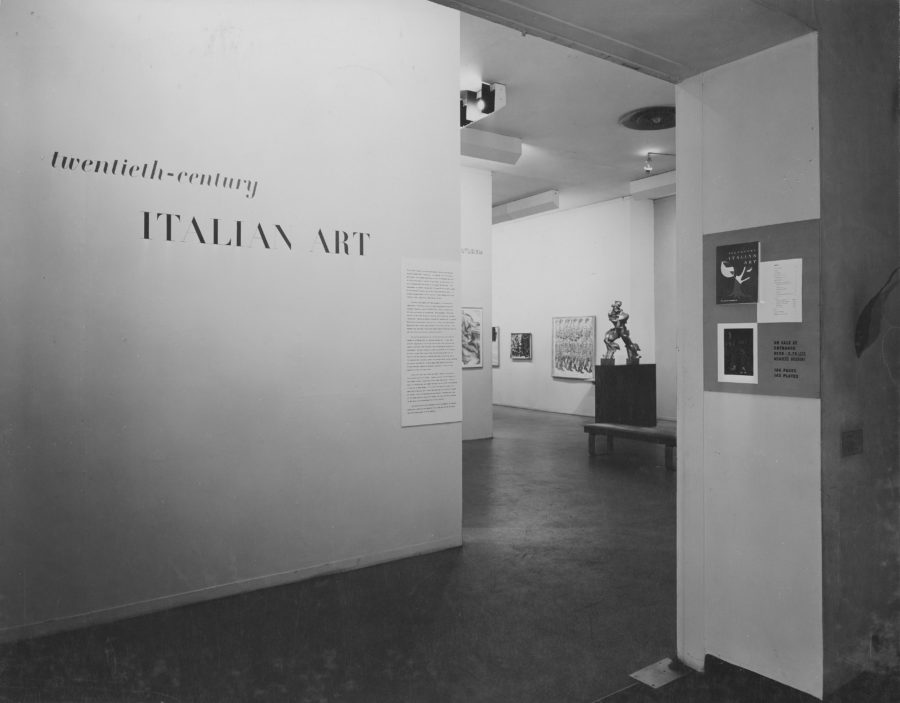
Despite the desire to deemphasize Novecento Italiano and the identification of new allies in Italy, MoMA’s selection of works had to pass muster with figures still attached to the notion of Novecento Italiano. Cardazzo and Sarfatti were still significant players, as was Benedetta Cappa Marinetti, who was to be a vital lender and seller of Futurist works for the exhibition, some of which were even incorporated into MoMA’s permanent collection.53 The widow of the former leader of the Futurist movement, and a Futurist artist herself, Marinetti contributed major historical works to the exhibition. She also argued with the curators about showing the Futurists of the Ventennio—something they refused to do. Sarfatti, despite her direct association with the Novecento Italiano, lent a Luigi Russolo Futurist painting from her own collection.54 In the background, MoMA’s panorama of modern Italian art and the smaller exhibitions taking place in South America in the second half of the 1940s shared more similarities than one might have imagined.
To rehabilitate modern Italian art in the international context, Americans tried to put into place an art system that would be fostered by private sponsors and associations. They sought the support of newly created para-diplomatic societies (e.g., Bardi’s initiatives in Brazil) and private collections. Although this might have been a way to escape explicit nationalistic governmental propaganda (such as the exhibitions of modern Italian art promoted by the Fascist regime abroad), it reveals a lot about the new American way of doing business in the art world, something the Italians had been learning since the Fascist era in their attempt to modernize their country and that South Americans had been taught in the debates that gave rise to the establishment of such modern art institutions as the São Paulo MAM.55 The major difference between the North and South Americans was the way MoMA and the United States curators negotiated with the Italians. If, in the case of South America, the choices of Italian art critics and collectors were not questioned, U.S. mediators took it upon themselves to construct their own reading of what modern Italian art should be. This proved to be a point of tension between the MoMA curators and the Italian artistic milieu, whose representatives had to accept that the United States curators were in the driver’s seat—despite questions about their expertise in navigating Italy’s artistic byways.56
In both cases, however, exhibitors had as a main aim the fostering of Italian art in the new art markets of North and South America. Important acquisitions were made on both sides. The assembling of the São Paulo MAM collection must be seen from this perspective; that is, the Italian paintings bought for the collection within a ten-month campaign in Italy were intended to foster such a market. In the case of MoMA and the North American art system, Twentieth-Century Italian Art not only resulted in essential pieces being added to the museum’s collection, but it also helped create a taste and a market for Italian art in the 1950s.57
Not coincidentally, three of the largest communities of Italians outside Italy were to be found in New York, São Paulo, and Buenos Aires, cities that, since the last half of the nineteenth century, had been a top choice of Italians seeking to immigrate to the Americas. In the case of South America, especially, Italian immigrants (and the immigration policies of the South American nations where they settled) played key roles in helping to modernize those countries.58 Also significant is how United States representatives dealt with their Italian and South American counterparts alike. The push to embrace private support of arts and culture, to read modern art into an autonomous sphere by emphasizing abstract practices, and the refusal to allow any national/governmental structure to oversee arts and culture (so as not to stain such a discourse), parallels the promotion of the liberal, free economic market by United States policies in the aftermath of World War II.
Therefore, what might at first appear to be a contradiction in the making of the São Paulo MAM collection—its abandonment of the discourses of avant-gardism and abstraction—can be explained in this broader framework of United States soft power exerted in the promotion of modern art as key Western value. United States hegemony would be felt both in South America and in Italy from then on. But United States soft-power policies were deployed with slight differences in each territory. Furthermore, a hierarchy existed between Italy (the cradle of European culture and supposedly “universal” humanistic values that had to be preserved at all costs) and South America. The latter, rising in the international arena, was being reconfigured into a modernized, independent territory that would play an essential role in the growth of new markets, and art was key to this strategy. For a brief moment, Italian representatives had the freedom to promote modern Italian art by reenacting the Fascist strategy of linking it to the classical tradition. Once the Brazilian elite, exemplified by Matarazzo, decided to create a biennial exhibition in São Paulo, following the model of the Venice Biennale, this scenario quickly changed. The Bienal de São Paulo would count on the support of United States mediators, but the emphasis would shift to a more abstract artistic language, something Brazilians would struggle with for a while—as did their Italian peers in the context of the first biennales to take place in Venice in the aftermath of World War II.
In the case of Brazil, by the time the first Bienal de São Paulo opened in 1951, the confrontations between figurative and abstract trends in art had reached their peak. The MAM’s inaugural exhibition, curated by art critic Léon Dégand in 1949, had set the tone for the new direction—and as a result been attacked by important figures in the Brazilian artistic milieu, with painter Emiliano di Cavalcanti (1897–1976) one of the fiercest opponents.59 In 1950, the young Brazilian artist Waldemar Cordeiro (1925–1973), of Italian descent, presented an exhibition of the Art Club di Roma, featuring his peers from the so-called Forma 1 Group, who were engaged in reinterpreting concrete abstraction. The exhibition would prove a key stimulus for the rise of the concrete art movement in Brazil.60
Sarfatti, who returned to her homeland in July 1947, finally saw the demise of her ideas about modern art in Brazil and fell into oblivion among the Brazilian artistic milieu.61 From then on, the Novecento Italiano, associated with conservative and even reactionary trends, was erased from the history of the MAM—just as it was in the United States from 1949 onward. Brazilian cultural agents still strove to foster a national identity, but their efforts were now distanced from what was understood to be an authoritarian and conservative political viewpoint. Instead, new Brazilian concrete art groups were fostered, eventually resulting in the Exposição Nacional de Arte Concreta (National Exhibition of Concrete Art), in 1956–1957, and a series of touring exhibitions of Brazilian modern art in Europe, where these groups received significant attention. A tension, however, remained, both internally and externally, as to where Brazilian art should go: whether in the direction of consolidating figurative currents, which had begun to build a “Brazilian iconography”; or in the direction of the new concrete groups staking out positions that largely diverged from the foreign trends of nongeometric abstraction, such as abstract expressionism and tachism.
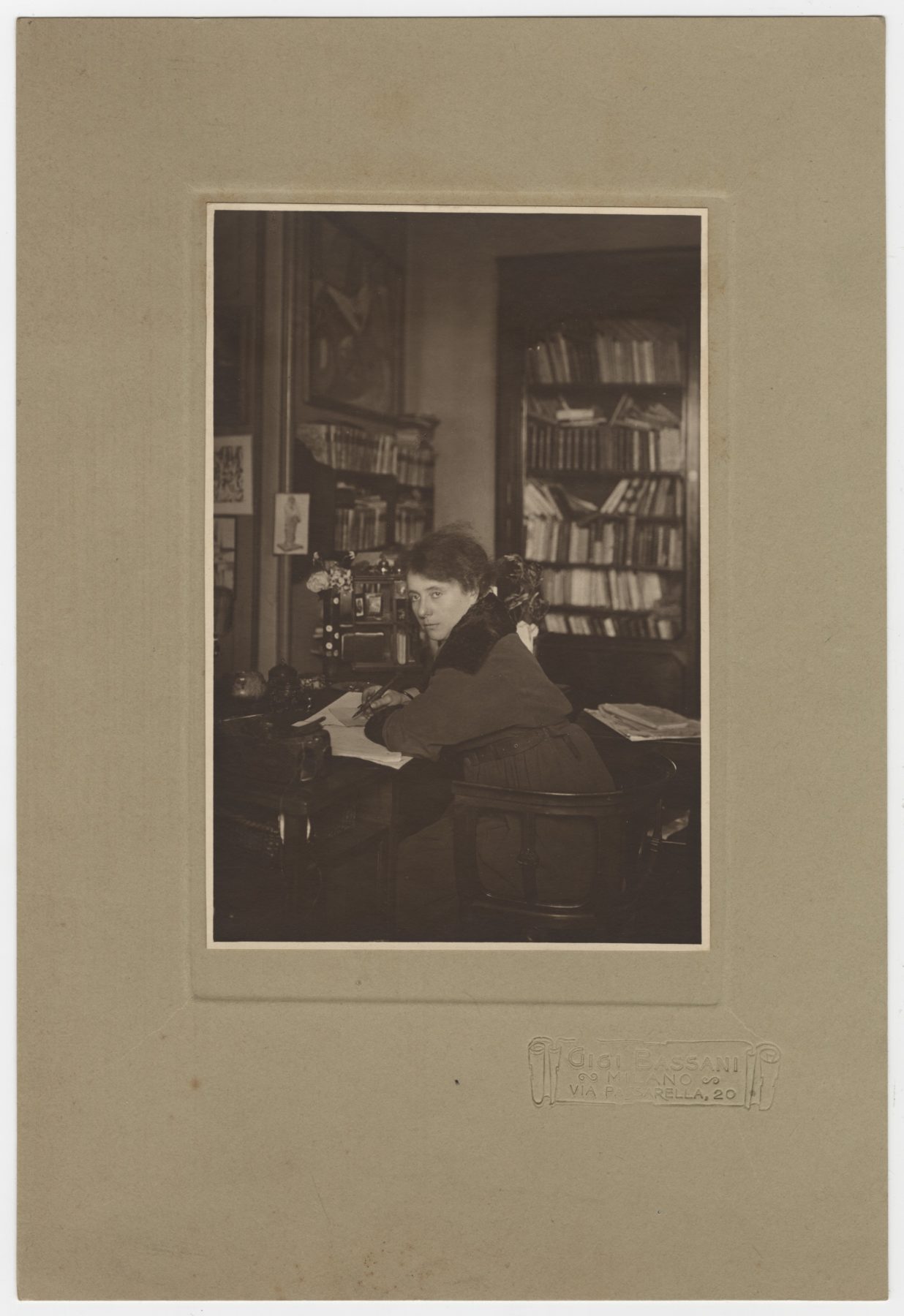
- 1 See Mário Pedrosa, “Brasília: Síntese das artes,” in Dos murais de Portinari aos espaços de Brasília, ed. Aracy Amaral (São Paulo: Editora Perspectiva, 1981), 275. The expression appears in the following sentence: “Our past is not fatal, for we remake it every day. And it has very little impact on our destiny. Because of the fatality of our making, we are condemned to the modern. Our ‘modernity’ is so radical that we have a Christening Certificate, something very rare among the history of States. We were born on a precise date: April 22, 1500. Before that, we simply did not exist”(emphasis added). The essay was Pedrosa’s opening speech to the international congress of the Association Internationale des Critiques d’Art, which took place in Rio de Janeiro, São Paulo, and Brasília (then under construction), in 1959. Today, thanks to the translation of a selection of his writings into English, Pedrosa is the most celebrated modern art critic of Brazil. His role in the making of Brazilian art and art criticism is key, and he was the most international Brazilian art critic of the twentieth century. On his intellectual life, see Otília Beatriz Fiori Arantes, Mário Pedrosa: Itinerário crítico (1991; São Paulo: Cosac Naify, 2004). For a selection of his writings in English, see Paulo Herkenhoff and Glória Ferreira, Mário Pedrosa: Primary Documents (New York: MoMA, 2015).
- 2 For a thorough study on the making of this collection, see Ana Gonçalves Magalhães, Classicismo moderno: Margherita Sarfatti e a pintura italiana no acervo do MAC USP (São Paulo: Alameda Editorial, 2016).
- 3 On Matarazzo, who was born into a family of Italian immigrants in Brazil and made a fortune as a Brazilian industrialist, see Fernando Azevedo de Almeida, O franciscano Francisco (São Paulo: Pioneira, 1976). This biography, commissioned by Matarazzo himself, is still the only reference exploring his life and engagement with art and culture in São Paulo, including his efforts with other São Paulo elites to spearhead Brazil’s economic and political life from the 1920s to the 1960s.
- 4 On the arrival of Bardi in Brazil and his collaboration in the creation of the MASP, see Viviana Pozzoli, “1946! Por que Pietro Maria Bardi decide deixar a Itália e partir para o Brasil?,” in Modernidade Latina: Os italianos e os centros do modernismo latino-americano, ed. Ana Gonçalves Magalhães, Paolo Rusconi, and Luciano Migliaccio (São Paulo: MAC USP, 2013), http://www.mac.usp.br/mac/conteudo/academico/publicacoes/anais/modernidade/pdfs/VIVIAN_PORT.pdf (accessed August 31, 2020). Brazilian historiography depicts Francisco Bandeira de Mello Assis Chateaubriand (1892–1968) as a Citizen Kane of the tropics. As the owner of the biggest network of newspapers and the magazine O Cruzeiro (inspired by the model of Life magazine), he was the wingman for President Getúlio Vargas. The most thorough biography of Assis Chateaubriand was written by Brazilian historian and journalist Fernando Morais, Chatô, o rei do Brasil (São Paulo: Companhia das Letras, 1994).
- 5 See Edmar Morel, “Por que amei Mussolini,” A Cigarra, February 1945, 8–9, 140, 154–55.
- 6 Aloysio de Castro (1881–1959) was the chairman of the Brazilian Academy of Literature from 1930 to 1951. See “Aloysio de Castro: Biografia,” Academia Brasileira de Letras, http://www.academia.org.br/academicos/aloisio-de-castro/biografia (accessed August 31, 2020). On the Institute of High Italian-Brazilian Studies, see Brazilian Presidential Decree no. 24.687, July 12, 1934.
- 7 See Luigi Federzoni, Parole fasciste al Sud America (Bologna: N. Zanichelli, 1938).
- 8 For the art exhibition, see Esposizione commemorativa del cinquantenario dell’immigrazione ufficiale San Paolo del Brasile: Mostra d’Arte, exh. cat., ed. Valerio Mariani (São Paulo: np., 1937).
- 9 See the correspondence between Castro and Sarfatti, especially the letter he sent to her dated October 9, 1936, in Fondo Margherita Sarfatti, Archivio del ’900, Museo di Arte Moderna e Contemporanea di Trento e Rovereto (MART).
- 10 See “Escreveu a biographia [sic] de Mussolini,” Diário da noite (Rio de Janeiro), September 29, 1939.
- 11 Several important biographies on Sarfatti have been published in Italy, France, and the United States. See Brian Sullivan and Phillip Cannistraro, Il Duce’s Other Woman (New York: William Morrow, 1993); and Françoise Liffran, L’Égérie du Duce (Paris: Seuil, 2009). On her South American period specifically, see Daniel Gutman, El amor judío de Mussolini: Margherita Sarfatti, del fascismo al exilio (Buenos Aires: Lumiere, 2006). Although well documented, all have a tone of reportage and give major weight to Sarfatti as a Fascist ideologist. For a more scholarly treatment, see Simona Urso, Margherita Sarfatti: Dal mito del Dux al mito americano (Venice: Marsilio, 2003). In 2015, art critic and journalist Rachelle Ferrario launched a biography of Sarfatti as an art critic. See Rachelle Ferrario, Margherita Sarfatti: La regina dell’arte nell’Italia fascista (Milan: Mondadori, 2015). However, she does not present original or unpublished material and bases her narrative largely on Sullivan and Cannistraro’s biography. None of these publications address Sarfatti’s connections to Brazil.
- 12 See Margherita Sarfatti, The Life of Benito Mussolini, trans. Frederic Whyte (London: Thornton Butterworth, 1925); and Margherita Sarfatti, Dux (Milan: Mondadori, 1926).
- 13 See L’indovina (The fortune teller), 1924, oil on canvas, 45.7 x 45.8 cm, MAC USP. For a thorough study of this work and its relation to Ferrara’s Quattrocento, see Ana Gonçalves Magalhães, “Achille Funi nella collezione del MAC USP,” Rivista l’uomo nero: Materiali per una storia delle arti della modernità (Milan, Università degli Studi di Milano), Mimesis, Nuova Serie, vol. 8, no. 7–8 (September 2011), 349–58.
- 14 Andrea Ronqui has studied Sironi’s works at the MAC USP collection and questions their interpretation in light of Novecento Italiano. See Andrea Ronqui, “Mario Sironi no acervo do MAC USP” (MA thesis, Universidade de São Paulo, March 2019), https://teses.usp.br/teses/disponiveis/ 93/93131/tde-12082019-113144/pt-br.php (accessed August 31, 2020). (Full disclosure: Ronqui completed her thesis under my supervision.) The MAM organized a solo Sironi exhibition in 1949, the first year of its exhibition program.
- 15 The most important in-depth history of the Novecento Italiano is still Rossana Bossaglia, Il Novecento Italiano (1976; Milan: Charta, 1995). See also Emily Braun and Norman Rosenthal, Italian Art in the Twentieth Century: Painting and Sculpture, 1900–1988, exh. cat.(London: Prestel, 1989).
- 16 See Mostra del Novecento Italiano, exh. cat., ed. Margherita Sarfatti (Milan: Palazzo della Permanente, 1926).
- 17 At the last moment, Mussolini altered Sarfatti’s first version of his speech to emphasize the autonomy of the arts in relation to state policies, which would have made her furious. About this controversy, see Elena Pontiggia, Il Novecento Italiano (Milan: Abscondita, 2003), which gathers the sources of the episode and the debate in the Italian press.
- 18 See Mostra del Novecento Italiano, exh. cat. (Buenos Aires: Amigos del Arte, September 1930). This was the only Novecento Italiano exhibition to be held outside Europe, according to the chronology and analysis presented in the 2018 exhibition on Sarfatti’s life as an art critic and collector in Milan and Rovereto. See Daniela Ferrari, “Novecento Italiano all’estero: una colonizzazione culturale,” in Margherita Sarfatti segni, colori e luci a Milano, exh. cat., ed. Anna Maria Montaldo and Danka Giacon (Milan: MART/Museo del Novecento/Mondadori, 2018), 51–65. However, neither Ferrari’s essay nor the exhibition and its accompanying catalogue address Sarfatti’s relations with South America in any depth or discuss the new material presented in Italiani sull’Oceano: Storie di artisti nel Brasile moderno ed indigeno alla metà del 900 at the Museo delle Culture (MUDEC) in Milan in 2016. See “Italians across the Ocean,” MUDEC, https://www.mudec.it/eng/italians-across-the-ocean/ (accessed August 31, 2020). This is where I first presented a section on Sarfatti in South America. See the exhibition’s “Dossier porteño.” The many exhibitions that promoted the Novecento Italiano mostly circulated on European territory. That a touring exhibition came to South America at all is extraordinary—it was the only non-European territory where an exhibition of its kind, coordinated by Sarfatti, took place. For a recent study of new evidence on the Novecento Italiano exhibition in South America and the actors and figures behind it, see Laura Moure Cecchini, “1930: Margherita Sarfatti entre Buenos Aires, Roma y Milán,” MODOS revista de história da arte, vol. 4, no. 1 (January–April 2020), 206–223.
- 19 See Margherita Sarfatti, Storia della pittura moderna (Rome: Cremonese, 1930).
- 20 Sarfatti was not alone in assessing classical tradition with periods of high art and in understanding art history as a series of peaks and crises. This cyclical view is inherent to art history discourse from the Renaissance period onward. Consider, for example, Giorgio Vasari’s Le vite, as well as the writings of various art critics and art historians in the first half of the twentieth century. See also the art history handbooks that Élie Faure created for the Popular Universities of France in the first decades of the twentieth century. Élie Faure, Histoire de l’art, 4 vol. (Paris: Georges Crès, 1909–1924). The last volume is dedicated to modern art. For a deeper analysis of the idea of a cyclical art history as it relates to Sarfatti’s writings, see Gonçalves Magalhães, Classicismo moderno, 163–71.
- 21 See, in particular, the articles on the book published in the newspapers O Paiz and Fanfulla: “Margherita Sarfatti fala-nos da missão que vem cumprir na América; Arte de hontem e de hoje—Expressões e valores—Arte italiana de 1900,” O Paiz, August 22, 1930; and “La grande scrittrice e intenditrice d’arte, Margherita Sarfatti è giunta ieri a Rio,” Fanfulla, São Paulo, Thursday, August 21, 1930. In both cases, the same book excerpt is published as a quotation from Sarfatti herself.
- 22 Margherita Sarfatti, L’America, ricerca della felicità (Milan: Mondadori, 1937).
- 23 Margherita Sarfatti, “Psicologia da mulher norte-americana,” O Jornal, December 22, 1935, 3.
- 24 Santa Rosa (1909–1956) is better known as a set and costume designer and art critic than as a painter. His work is still to be assessed by Brazilian art historiography. For more information, see “Santa Rosa,” in Enciclopédia Itaú Cultural de arte e cultura Brasileiras (São Paulo: Itaú Cultural, 2020), https://enciclopedia.itaucultural.org.br/pessoa5506/santa-rosa (accessed August 31, 2020).
- 25 See Umberto Notari, La donna tipo tre (Milan: Società Anonima Notari [Istituto editoriale Italiano], 1929), with illustrations by Enrico Sacchetti that in turn seem to align with the illustrations in the New Yorker magazine of those days. I thank my colleague, good friend, and longtime collaborator Paolo Rusconi for giving me a copy of Notari’s book.
- 26 See “Distinguished Visitors,” Bulletin of the Museum of Modern Art, vol. 1, no. 9 (May 1934), 4.
- 27 See Sullivan and Cannistraro, Il Duce’s Other Woman; and Liffran, L’Égerie du Duce.
- 28 On Bottai’s policy for the promotion of modern Italian art collections, see, for instance, Danka Giacon, “Cortina, 1941,” Rivista l’uomo nero: Materiali per una storia delle arti della modernità , vol. 3, no. 2 (September 2005) 51–68, on the exhibition of private Italian collections that took place in Cortina d’Ampezzo, as well as the shows organized by the Galleria d’Arte di Roma featuring the Valdameri and the Cardazzo collections.
- 29 On this issue and the dissemination of Latinity analyzed in the French context, see Vers une Europe latine: Acteurs et enjeux des échanges culturels entre la France et l’Italie fasciste, ed. Catherine Fraixe, Lucia Piccioni, and Christoph Poupault (Brussels: P.I.E. Peter Lang; INHA, 2014). One of the first modern Italian art collections in France was the so-called Donation Sarmiento, a set of seventy artworks that the para-diplomatic Comité France-Italie donated on behalf of the Italian state in 1936 to reaffirm the collaborations signed by Mussolini and French President Pierre Laval in 1935.
- 30 See Margherita Sarfatti, “L’arte e il Fascismo,” in La civiltà fascista, ed. Giuseppe Luigi Pomba (Turin: Unione Tipografica Torinese, 1928), 144.
- 31 For example, the Jeu de Paume hosted a major Italian modern art exhibition (inaugurating the Musée des Écoles Étrangères’s Italian Gallery of Contemporary Art) that was paired with an exhibition of Italian Renaissance artists. For a study of the Sarmiento donation, see Vers une Europe latine. For the exhibition of Italian Renaissance art organized in France in 1935, see Emily Braun, “Leonardo’s Smile,” in Donatello among the Blackshirts: History and Modernity in Visual Culture in Fascist Italy, ed. Claudia Lazzaro and Roger J. Crum (Ithaca, NY: Cornell University Press, 2005), 173–87. Italian Old Masters were also presented in the context of modern art at MoMA in 1940. See the exhibition Italian Masters Lent by the Royal Italian Government, the only time Botticelli’s Birth of Venus crossed the Atlantic Ocean (MoMA’s website for the exhibition, including installation images, is at https://www.moma.org/calendar/exhibitions/2978?locale=pt).
- 32 See “Ornamentação do Lar: Uma bibliotheca original e pratica,” Revista da Semana, February 11, 1939, 48. A copy of the original photograph can be found in Sarfatti’s papers in the Archivio del ’900, Museo di Arte Moderna e Contemporanea di Trento e Rovereto (MART).
- 33 On the issue of art editions and publications and engagement with the art system in Milan, see Viviana Pozzoli, “Il sistema dell’editoria d’arte contemporanea nella Milano degli anni trenta” (PhD diss., Dottorato in Scienze del Patrimonio Letterario, Artistico e Ambientale, Università degli Studi di Milano, 2017).
- 34 On Milliet as a modern art critic, see Lisbeth Rebollo Gonçalves, Sérgio Milliet crítico de arte (São Paulo: Edusp/Editora Perspectiva, 1992). On de Andrade’s critical writings and his notions about the connections of modern art to the Novecento Italiano, see Tadeu Chiarelli, Pintura não é só beleza: Crítica de arte de Mário de Andrade (Florianópolis: Letras Contemporâneas, 2007), ch. 3.
- 35 On the Santa Helena Group, see Walter Zanini, Arte no Brasil nas décadas de 1930–40: O Grupo Santa Helena (São Paulo: Edusp/Nobel, 1991); and Patrícia Martins Santos Freitas, “Grupo Santa Helena e o universo industrial paulista (1930–1970),” in Atas do VII Encontro de história da arte: Os caminhos da história da arte desde Giorgio Vasari: Consolidação e desenvolvimento da disciplina, ed. Gabriela Lodo et al. (Campinas: IFCH/Unicamp, 2012), 366–77, https://www.ifch.unicamp.br/ eha/atas/2011/ATAS.pdf (accessed June 12, 2020).
- 36 See Mário de Andrade, “Esta paulista família,” O Estado de S. Paulo, July 2, 1939.
- 37 This aligns with the interpretation Patrícia Freitas proposes in her master’s thesis on the Santa Helena Group’s landscapes as industrial landscapes and the group’s connections to São Paulo. See Patrícia Martins Santos Freitas, “O Grupo Santa Helena e o universo industrial paulista (1930–1970)” (MA thesis, Graduate Program of History of Art and Culture of the Institute of Human Sciences at the University of Campinas, 2011). The support given to this group by the São Paulo elite, mainly through Matarazzo and his factory and financial resources, sounds contradictory. However, their aim might have been to “domesticate” certain radical workers’ groups—by neutralizing them—and to instrumentalize this kind of artistic practice in the discourse around making Brazilian identity synonymous with São Paulo identity.
- 38 On Rossi Osir, see Nuria Ribeiro, “Rossi Osir: Artista e idealizador cultural” (MA thesis, Department of Visual Arts of the School of Communications and Arts of the University of São Paulo, 1995).
- 39 One example is the so-called Collana Scheiwiller that art critic and editor Giovanni Scheiwiller organized for the Milanese publishing house Hoepli from 1925 onward. Rossi Osir knew Hoepli’s editions as early as 1927, and by the 1930s the Milanese editor had a bookshop in downtown São Paulo, where these editions were available to the São Paulo intellectual circle. On Rossi Osir’s library, see Lauci dos Reis Bortoluci, “A biblioteca de Paulo Rossi Osir: Coleção e arte” (MA thesis, Programme of Aesthetics and Art History, MAC USP, 2007). MAC USP purchased the artist’s library from his widow in 1966 to form the core of the museum’s own library. It is one of the richest libraries of original editions of modern Italian art in Brazil.
- 40 On Romero Brest and the debate over modern art in Argentina in the 1940s and 1950s, see Arte de posguerra: Jorge Romero Brest y la revista Ver y Estimar, ed. Andrea Giunta and Laura Malosetti Costa (Buenos Aires: Paidós, 2005).
- 41 See Margarita [sic] G. de Sarfatti, Espejo de la pintura actual (Buenos Aires: Argos [Col. Arte y los artistas], 1947); and Jorge Romero Brest, La pintura brasileña contemporánea (Buenos Aires: Editorial Poseidon, 1945). The publishing house where Romero Brest launched his book is the same one that had published two monographs by Sarfatti on Venetian Renaissance painters a year before. See Margarita [sic] G. de Sarfatti, Giorgione, el pintor misterio (Buenos Aires: Editorial Poseidon, 1944); and Margarita [sic] G. de Sarfatti, Tiziano o de la fe en la vida (Buenos Aires: Editorial Poseidon, 1944). For a thorough study of Sarfatti’s relationship with Romero Brest, see Maria Cristina Rossi, “Una pulseada por la abstracción: Romero Brest entre Margherita Sarfatti y Lionello Venturi,” in Arte de posguerra, ed. Giunta and Costa, 51–69.
- 42 See Romero Brest’s 1945 correspondence with Milliet, in Jorge Romero Brest Papers, Biblioteca Julio Payró, Departamento de Historia del Arte, Universidad de Buenos Aires.
- 43 See fig. 17. What Sarfatti called “classicità moderna” (modern classicism) is analogous to Milliet’s idea of “classicismo despido” (nude/naked classicism) in his book. For a deeper comparison of Milliet’s and Sarfatti’s books, see Gonçalves Magalhães, Classicismo moderno, ch. 4. See also Sérgio Milliet, Marginalidade da pintura moderna (São Paulo: Coleção “Departamento de Cultura” XXVIII, 1942), which uses a graphic to illustrate the author’s argument about the evolution of art history.
- 44 See Sérgio Milliet, “Abril, 15,” in Diário crítico, vol. 6 (São Paulo: Martins Fontes/Edusp, 1981), 75–77; originally published in O Estado de São Paulo, April 15, 1948.
- 45 Arte contemporâneo italiano, ed. Pietro Zuffi (Santiago de Chile: Talleres Zig-Zag, 1946). (This volume is bilingual, in Spanish and Portuguese.) Though it should have toured to Santiago de Chile, Buenos Aires, and Rio de Janeiro, the exhibition never reached the last city. As per Zuffi’s short correspondence with Italian poet and art critic Libero de Libero upon the former’s arrival in South America, the exhibition in Santiago de Chile (the first stop on the tour) opened later than expected, in mid-1946, and thus could continue on only to Buenos Aires. See correspondence in Fondo Libero de Libero, Archivio della Quadriennale, Rome. In one of his first letters to de Libero, Zuffi indicates he did not find the political atmosphere in the South American countries to be to his liking. On March 20, 1946, for example, he writes, “Never in my life have I seen so many fascists as in these countries, day in day out they appear like mushrooms.” Zuffi witnessed the rise of Peronism in Argentina and was aware of the unstable political atmosphere in Brazil following the country’s first free elections at the end of the Vargas era.
- 46 See Jorge Romero Brest, “De Chirico, Carrà y la Pintura Italiana del Novecientos,” Histonium, vol. 8, no. 87 (August 1946), 487–94.
- 47 Artistas italianos de hoy, exh. cat. (Buenos Aires: Galería Müller, July 1947 [Colección Victor Manuel Barbaroux]). On Vittorio Barbaroux and his importance to the promotion of the Novecento Italiano,see Milano anni trenta, l’arte e la città, exh. cat., ed. Elena Pontiggia and Nicoletta Colombo (Milan: Mazzotta, 2004), 60–63, 323–25.
- 48 See [Pietro Maria Bardi], Exposição de Pintura Italiana Moderna, exh. cat. (Rio de Janeiro: Studio di Arte Palma, May 1947).
- 49 See Mário Pedrosa, “Os italianos—Sobretudo os jovens,” Correio da manhã, May 17, 1947. Emphasis added. Pedrosa’s praise for these works is an exception to the main corpus of his criticism. Known as an ardent defender of the avant-garde and constructivist currents in the visual arts, his review of Bardi’s exhibition is curious. On the other hand, among the artists Bardi chose for the exhibition was the Bolognese Giorgio Morandi, for whom Pedrosa had great appreciation. Moreover, Pedrosa was aware of Alberto Magnelli’s oeuvre connecting the Lombard artistic milieu with the group Cercle & Carré in France. Finally, he liked to emphasize the younger generation of artists, such as those belonging to the Gruppo Corrente di Vita Giovanile, many of whom had engaged in anti-Fascist movements and were partisans during the war. Bardi’s exhibition included several works by these artists, including Renato Guttuso, Renato Birolli, Afro Basaldella, and Ennio Morlotti (the latter a member of the anti-Fascist group Fronte Nuovo delle Arti). The presence of such artists might explain Pedrosa’s interest in reviewing the exhibition. His references to the Latin “she-wolf” and the Latin language, however, highlight an exceptional aspect of the review: the line he draws between this younger generation and the Italian artistic tradition. At the time, many of those who were promoting shows like Bardi’s still used this argument in a more conservative way. Pedrosa’s interpretation of modern Italian art at this time had a parallel in the United States, where the artist Corrado Cagli (who lived as a U.S. citizen from 1942 to 1948) argued against the idea of a rupture in modern art in Italy and for a more open approach to the idea of continuity. For more on Cagli, see Raffaele Bedarida, Corrado Cagli: La pittura, l’esilio, l’America (1938–1947) (Rome: Donzelli Editore, 2018), 201–2.
- 50 For the definition of the word bugre, see the Dicionário Online de Português, https://www.dicio.com.br/bugre/ (accessed August 31, 2020).
- 51 See J.T.S. [James Thrall Soby], “Report on the Exhibition of 20th-Century Italian Painting and Sculpture, for the Museum of Modern Art” (1948), in The Museum of Modern Art Archives, MoMA Exhibitions Collection, Folder 413.6. The final part of Soby’s report is dedicated to the “political implications of the exhibition.” Both Soby and Barr tried to avoid political debate, though. Soby writes, “Our show was not planned for political reasons. Our choice of works in Italy, though not yet final, was made solely on the basis of esthetic quality… We made clear from the beginning that the political convictions of the artists would not be a factor in our judgment of their work. . . . We found on arrival in Italy that the majority of the living artists were Communists.” Such was the case with the artists connected to the Gruppo Corrente di Vita Giovanile, the major example being Guttuso, who was represented in the MoMA show, in Bardi’s exhibition, and in other exhibitions that took place in South America, as well as in Matarazzo’s purchases for MAM. The idea of holding a modern Italian art exhibition at MoMA had been in the offing since before the war, largely thanks to Barr’s wife, Margaret Scolari Barr, an art historian and enthusiastic appreciator of the Italian artists of her generation. For a deeper analysis of the Twentieth-Century Italian Art exhibition, see Raffaelle Bedarida, “Export/Import: The Promotion of Contemporary Italian Art in the United States, 1935–1969” (PhD diss., City University of New York, 2016), esp. ch. 2.
- 52 See Twentieth-Century Italian Art, exh. cat., ed. James Thrall Soby and Alfred Barr (New York: Museum of Modern Art, 1949), 27.
- 53 MoMA purchased Boccioni’s Unique Forms of Continuity in Space (1913/1934) and Development of a Bottle in Space (1912/1934?) from Marinetti. See the correspondence between Benedetta Cappa Marinetti and Alfred Barr, in Benedetta Cappa Marinetti Papers, Box 8, Special Collections, Getty Research Institute, Los Angeles.
- 54 See Twentieth-Century Italian Art, ill. 17, 43. Sarfatti lent MoMA Russolo’s Solidity of Fog (in the exhibition catalogue, titled only The Fog), 1912, oil on canvas, now on permanent loan to the Peggy Guggenheim Museum in Venice from the Collection Gianni Mattioli.
- 55 The Galleria la Cometa and its New York venue opened for a year, from 1937 to 1938, with the support of the Italian Ministry of Education, though the Italian minister then explicitly sought to support the gallery without publicizing the Italian government’s support for it. See Bedarida, Corrado Cagli, 29–51. In Brazil, one of the main debates among the creators of the São Paulo MAM was whether it should be a public museum (a position defended by Milliet, who was the director of the São Paulo Public Library and helped to strengthen public policies for modern art in the city) or a private one (the position taken by Francisco Matarazzo Sobrinho under the guidance of U.S. Foreign Service officer and MoMA trustee Carleton Sprague Smith). On the origins of the São Paulo MAM and this debate, see Annateresa Fabris, “A travessia da arte moderna,” in História e(m) movimento: Atas do seminário MAM 60 anos (São Paulo: MAM, 2008).
- 56 See James Thrall Soby, memorandum to Monroe Wheeler (administrative director of MoMA), February 9, 1949, in Museum of Modern Art Archives, MoMA Exhibitions Collection, Folder 413.3: “The basic objections in Italy to our Italian exhibition are: 1. The Summer date which they dislike and cannot be persuaded is a good season here. 2. The fact that Toninelli is the head of our Committee and as such the one responsible for the Italian end of the show. 3. The fact that the choice of pictures has been made by Alfred and me and not by Italian critics” (emphasis added).
- 57 The weight of U.S. economic power can be seen through the exhibition MoMA organized a decade later in Rome at the Galleria Nazionale d’Arte Moderna (July 16–September 18, 1960). See Arte italiana del XX secolo dalle collezioni americane, exh. cat. (Milan: Silvana editoriale d’arte, 1960). Many of the works on display in the exhibition had been purchased by North American collectors during the 1949 show. Similarly, in South America, many of the works included in touring exhibitions there were also available for local sale. How many were sold and to whom is much harder to ascertain. Matarazzo’s purchases for the MAM are the sole example identified to date of modern Italian paintings being acquired for public collections in the region.
- 58 See João Fábio Bertonha, “Fascism and Italian Communities in Brazil and in the United States: A Comparative Approach,” Italian Americana, vol. 19, no. 2 (summer 2001), 146–57.
- 59 For a deeper analysis of this episode and its connections to debates in Italy, see Ana Gonçalves Magalhães, “O debate crítico no Edifício Sul América, Rio de Janeiro, 1949,” in Anais do XXIX Colóquio do Comitê Brasileiro de História da Arte, ed. Roberto Conduru and Vera Beatriz Siqueira (Rio de Janeiro: CBHA, 2009), 120–28, http://www.cbha.art.br/coloquios/2009/anais /pdfs/ anais_coloquio_2009.pdf (accessed August 31, 2020); and Ana Gonçalves Magalhães, “A disputa pela arte abstrata no Brasil: revisitando o acervo inicial do Museu de Arte Moderna de São Paulo, 1946–1952,” Resgate: Revista interdisciplinar de cultura, vol. 25, no. 1 [33] (2017), 7–28, in Dossiê Escrita da História, https://periodicos.sbu.unicamp.br/ojs/index.php/resgate/article/view/8648167/16636 (accessed August 31, 2020). Di Cavalcanti is best known for his paintings depicting elements of popular culture among the African-descended communities of Rio de Janeiro and the favelas: that is, the culture of samba music. Dubbed the “painter of mulatas,” he is probably the artist most associated with the idea of a national identity in Brazil. See, for instance, the catalogue of the exhibition that the Pinacoteca do Estado de São Paulo organized in 2017: No subúrbio da modernidade—Di Cavalcanti 120 anos, exh. cat., ed. José Augusto Ribeiro (São Paulo: Pinacoteca do Estado de São Paulo, 2017).
- 60 For more on these connections, see Heloísa Espada, “Waldemar Cordeiro, the Rome Art Club and its Consequences on the Ruptura Manifesto” (paper presented at the “Reconstructing Complexity: Art in Brazil at Mid-century and after World War II” panel, organized by Adèle Nelson, atBRASA XIII, March 31–April 2, 2016, Brown University, Providence, Rhode Island).
- 61 As her biographers point out, she also fell into oblivion in her own country.